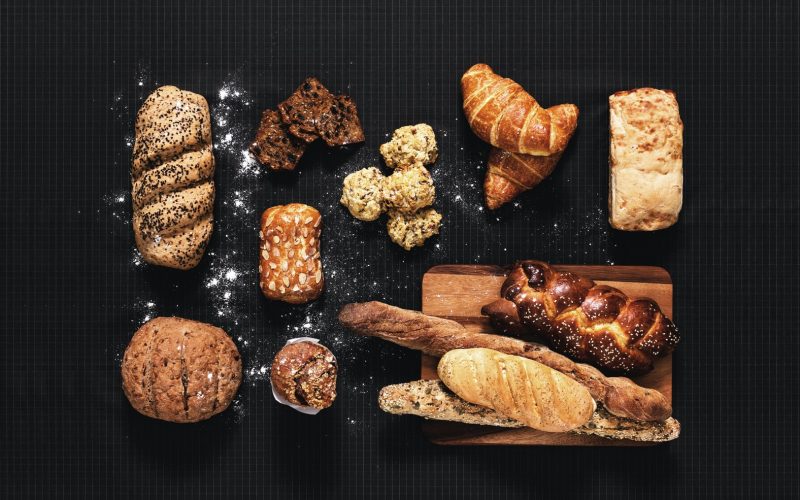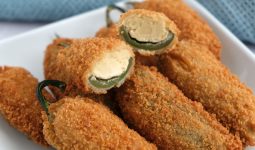Learn about the different types of bread eaten around the world.
Bread is the most extensively consumed food on the planet and has been a staple since human history began.
The early man employed starch extracts, possibly drawn from the roots of cattails and/or ferns, to manufacture flatbread as far back as 30,000 years ago in Europe.
Even in the twenty-first century, many people recognize that nothing beats the aroma of freshly baked bread, especially when entering a bakery first thing in the morning.
Neolithic man invented agriculture around 10,000 B.C. and used the grains he’d produced and farmed to make bread.
Also, as early as 4,000 B.C., the Ancient Egyptians used yeast as a leavening agent after innovations in breadmaking.
The Egyptians taught the Greeks how to bake bread, quickly spreading the practice throughout Europe.
Furthermore, bread and the wheat used to produce it were considered more important in the ancient Roman diet than meat.
The hue of the bread one ate also revealed one’s social status. Generally, the darker the bread, the lower the social status of individuals who ate it.
Let’s go straight now to the different bread types without boring you.
1. Baguette

A baguette is a yeast-based bread from France. This bread is distinguished by its long, oblong shape and slits.
These slits allow gas to escape from the bread while it bakes.
Baguettes, French bread, or French sticks are formed primarily of wheat, water, yeast, and salt.
Its appearance is instantly recognizable to bread aficionados worldwide.
2. Brioche
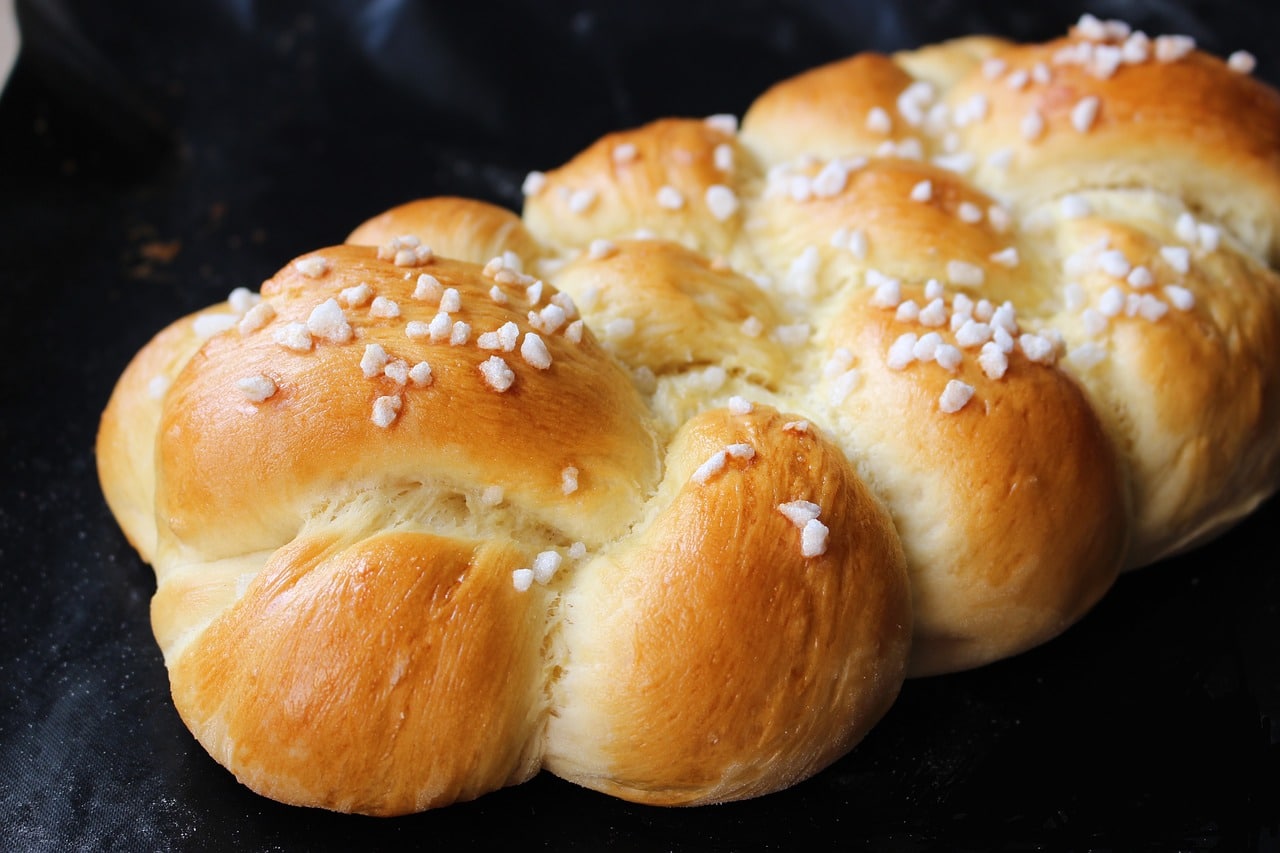
Brioche is a French bread baked with butter and eggs, with a light texture and sweetness.
Also, the brioche crust is light and fluffy, with a golden-yellow hue.
The egg spread on top of the dough before it is placed in the oven to bake is responsible for the beautiful golden hue.
Brioche bread is excellent for producing delightful delicacies such as French toast.
Furthermore, if you’ve never tried brioche, there’s no better time to try a loaf of soft, somewhat sweet brioche.
3. Ciabatta
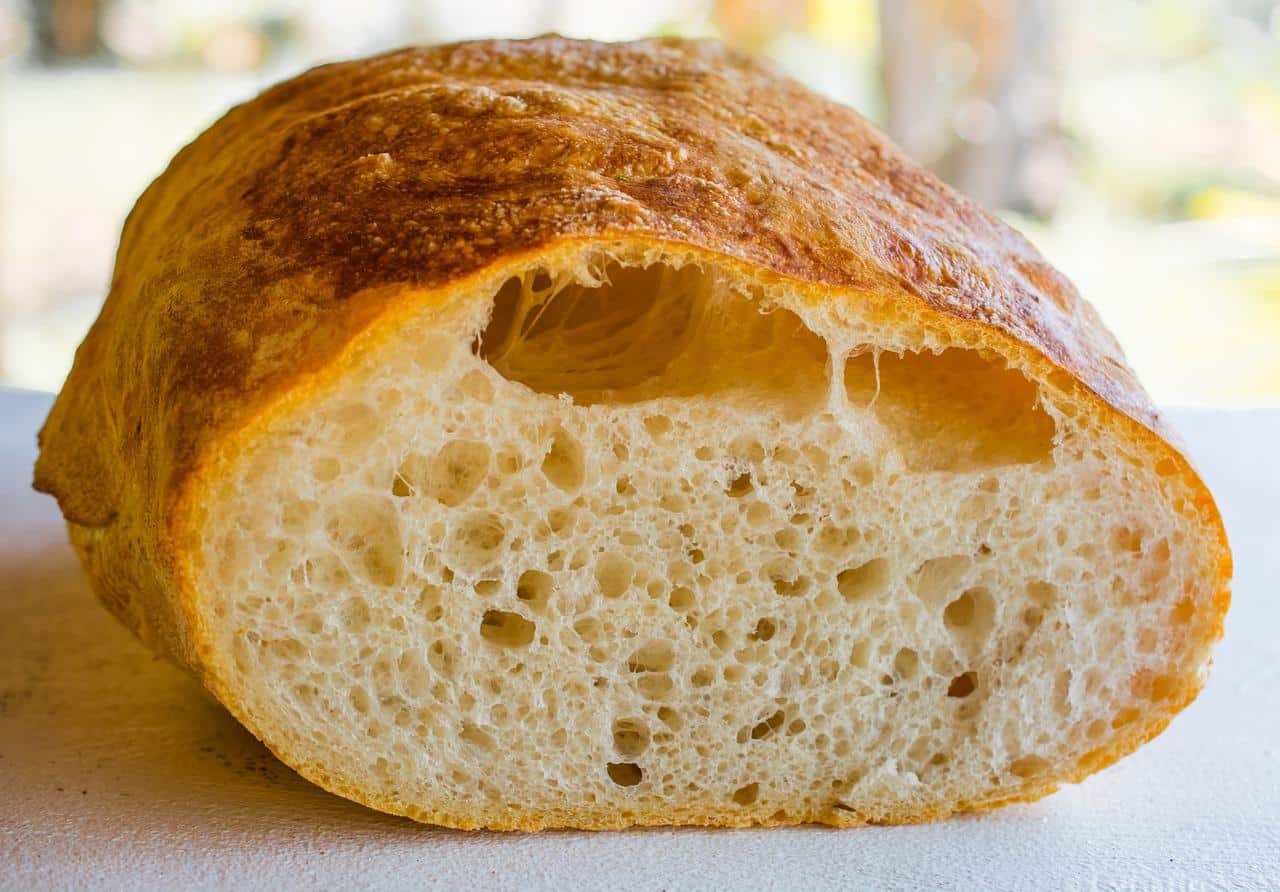
The Italian word for “slipper” is “ciabatta.” Water, salt, yeast, and wheat flour are just a few of the fundamental ingredients of this Italian-invented bread.
The crust and even the texture of ciabatta bread vary depending on where you eat it in Italy.
On the other hand, the main ingredients in ciabatta bread are the same in every loaf.
Ciabatta features a chewy crust and a soft center, making it ideal for paninis, sandwiches, and a variety of other foods.
4. Focaccia Bread
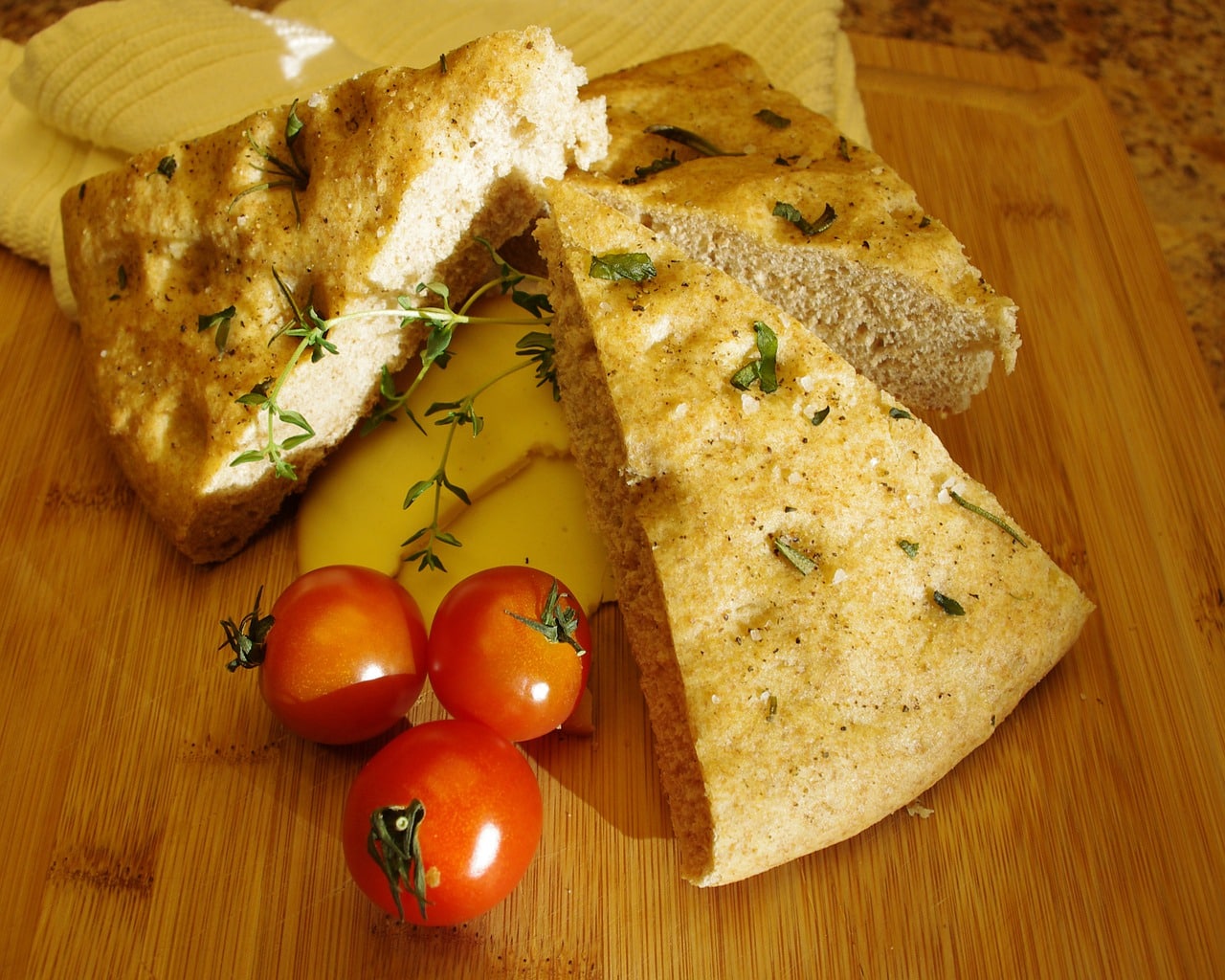
This type of bread is likewise Italian in origin. Focaccia bread is often baked in a baking pan to produce a flat loaf. Focaccia dough resembles pizza dough and is typically brushed with olive oil before baking.
Focaccia bread has a crisp crust that is delicate and thin. Many bakers add herbs and garlic to their recipes as desired, as well as sea salt.
Focaccia bread can be eaten independently, dipped in soup, or used to remove residual sauce from a plate.
5. Sprouted Bread

This whole grain bread variety, in which the whole grain seeds have already begun to germinate, has recently gained appeal in health food circles as a healthier alternative to the (already-healthy) whole grain loaf.
It’s still unclear whether it offers these alleged health benefits, but we do know that it’s a delicious, sugar-free alternative to most other bread.
It’s also easier to digest than whole wheat grain-based products. This is one of the different types of bread.
6. Flatbread

Tortillas, naan, and pita bread are among the most popular flatbreads in the United States, but there are nearly 30 more cultural varieties. Flatbreads are thin.
They are made using flour, salt, and some form of liquid (commonly water or yogurt).
As a result, they’re incredibly adaptable and great for quick meals like homemade pizza. A flatbread is even your favorite sandwich wrap.
7. Tortilla
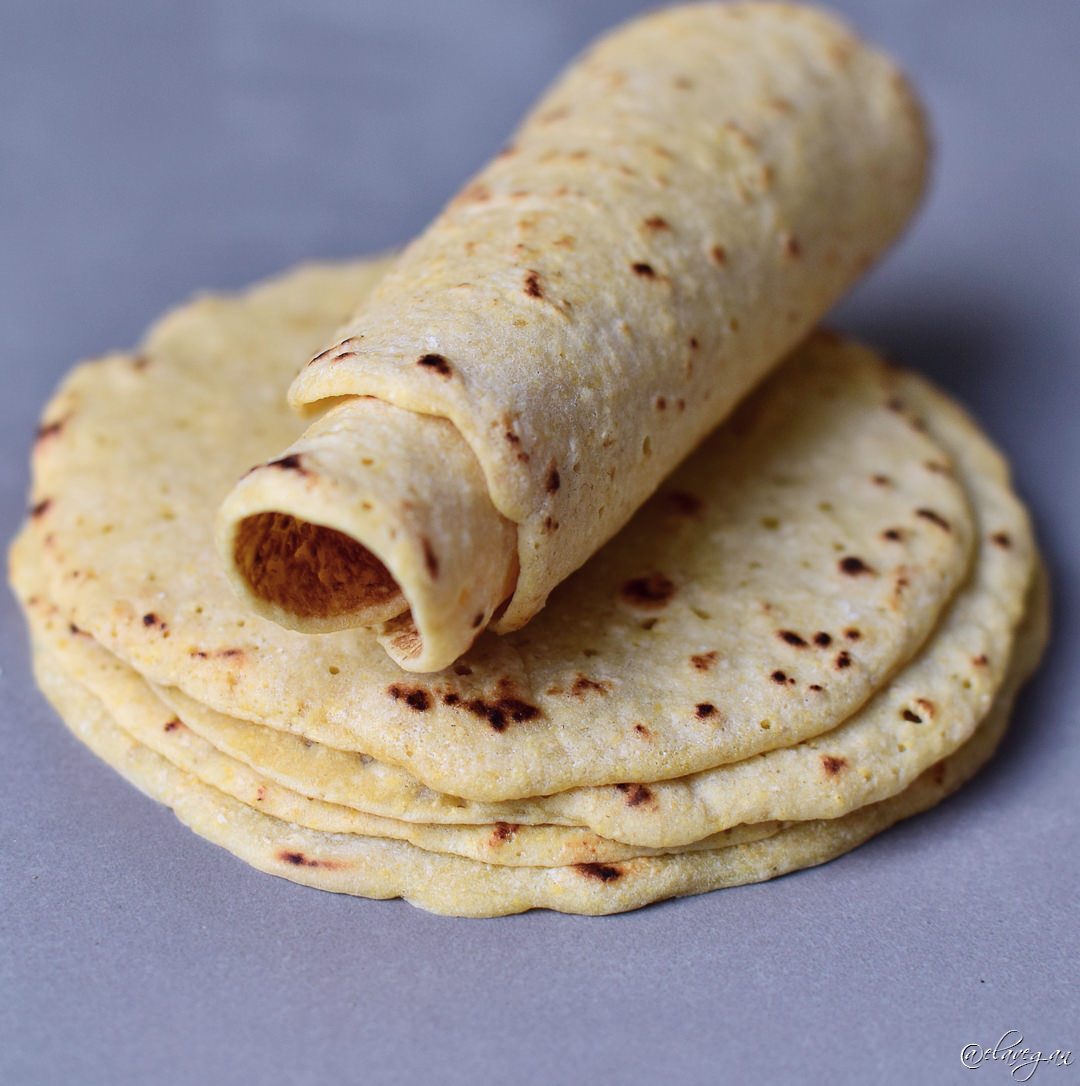
One of the most well-known flatbread forms, the tortilla, is native to Mexico and is often baked with wheat or maize flour.
This deliciously chewy bread is renowned for its ease of preparation—all you need is water, flour, and a pinch of salt—and is designed to hold practically any combination of meat, cheese, vegetables, or anything in between.
Everything tastes better on a tortilla! Furthermore, in this Delish chicken flautas dish, they’re fried and oh-so-crispy.
8. Multigrain Bread
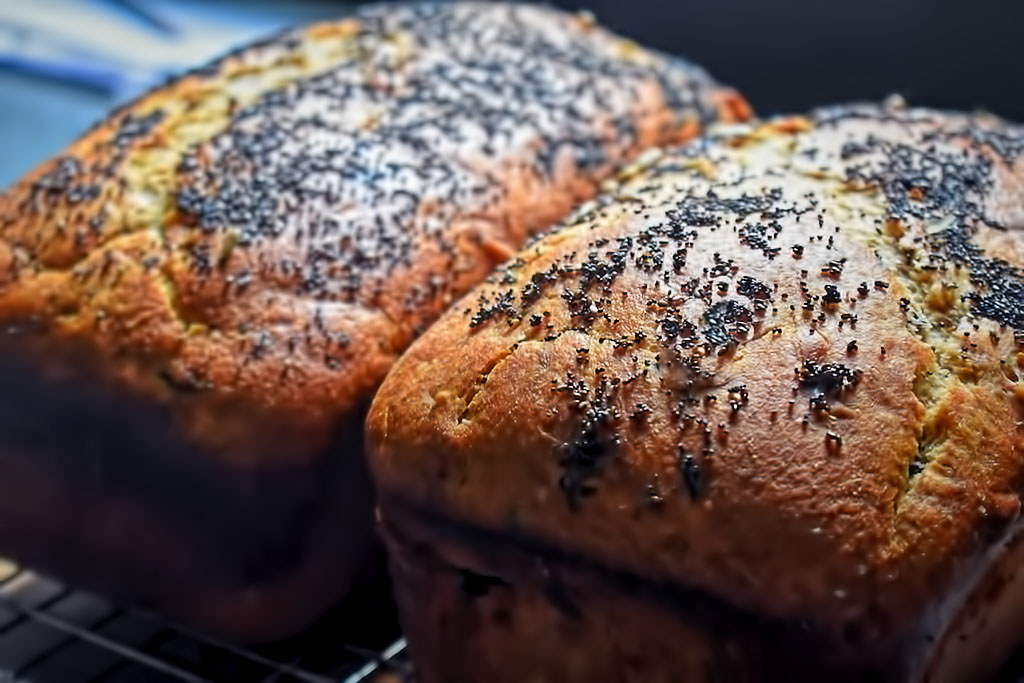
To give it a rich, robust flavor, multigrain bread is made with grains, including oats, barley, flax, and millet.
Because of these various elements, it is a very nutritious and tasty bread option.
It is also excellent for morning toast, sandwiches, or dipping in herb-strewn sauces or vegetable oil.
9. Pita Bread
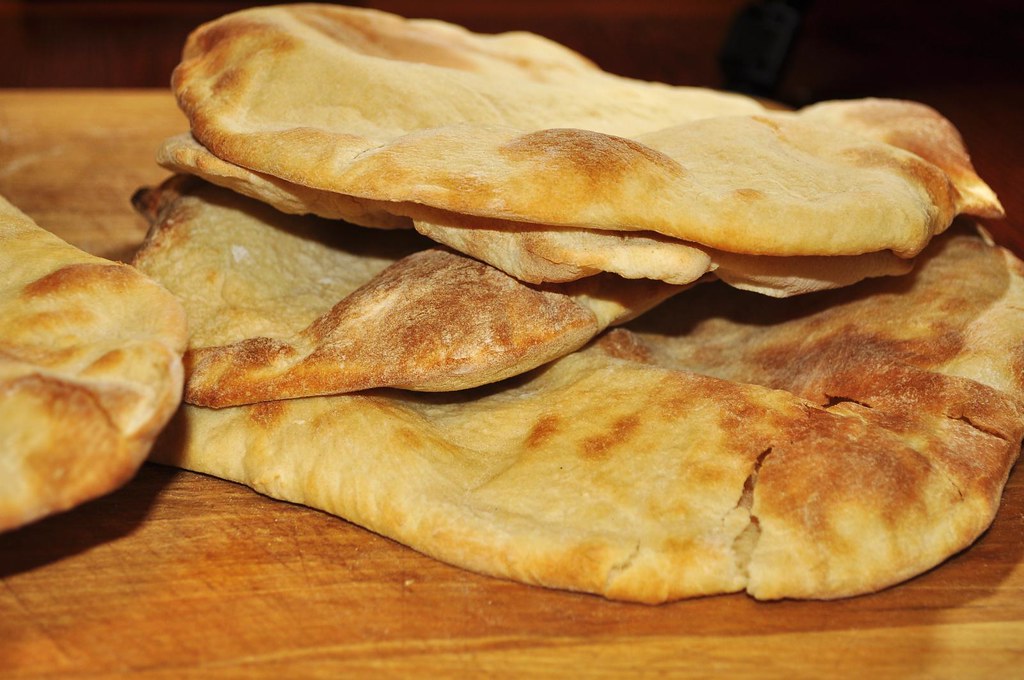
There are numerous ways to eat a slice of pita bread. One method involves dipping the pita into sauces after cutting it into wedges or stuffing it with various meats for a delectable whole sandwich.
Pita bread is a Middle Eastern bread fried at extremely high temperatures, allowing the moisture in the dough to escape quickly.
This also aids in forming a huge air bubble in the bread’s middle—the “pocket,” ideal for stuffing with meat and other items. Wheat flour is used to make pita bread.
10. Rye Bread
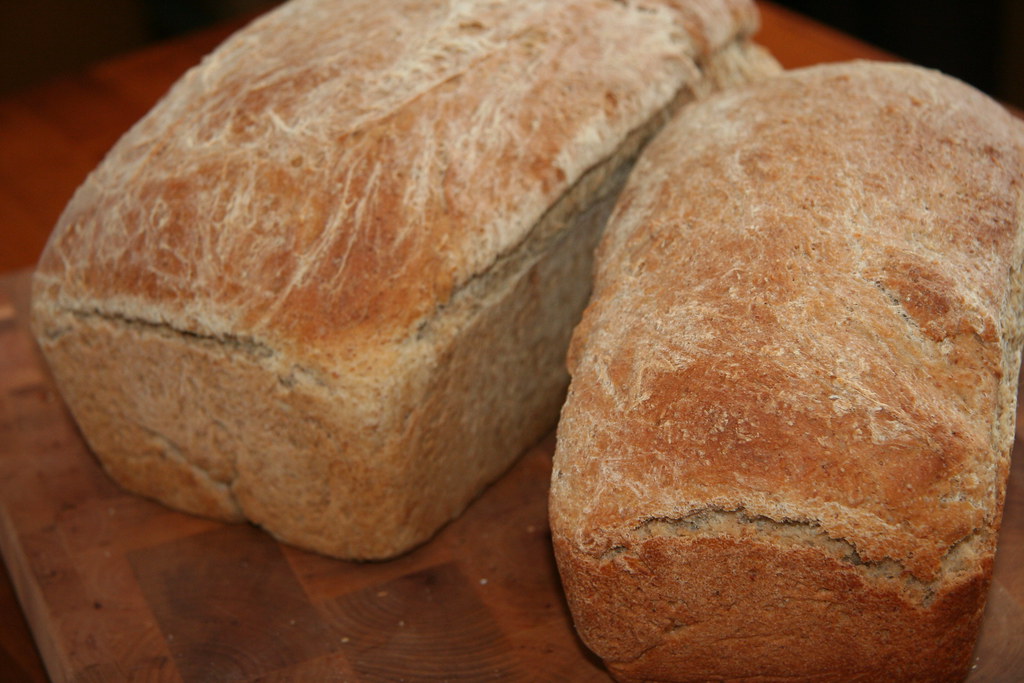
Long thought to be a poor man’s bread, rye has grown in popularity owing to its rich flavor.
Rye bread has a tight texture and a powerful flavor since it is made with rye and regular bread flour.
Some bakers add caraway or dill seeds to the rye bread to give it a more earthy flavor.
Rye bread gives many sandwiches their signature flavor, notably corned beef and pastrami sandwiches.
A dash of mustard on a slice of bread used in these sandwiches can also assist in bringing out the flavors of the bread and meats. This is one of the different types of bread.
11. Sourdough Bread
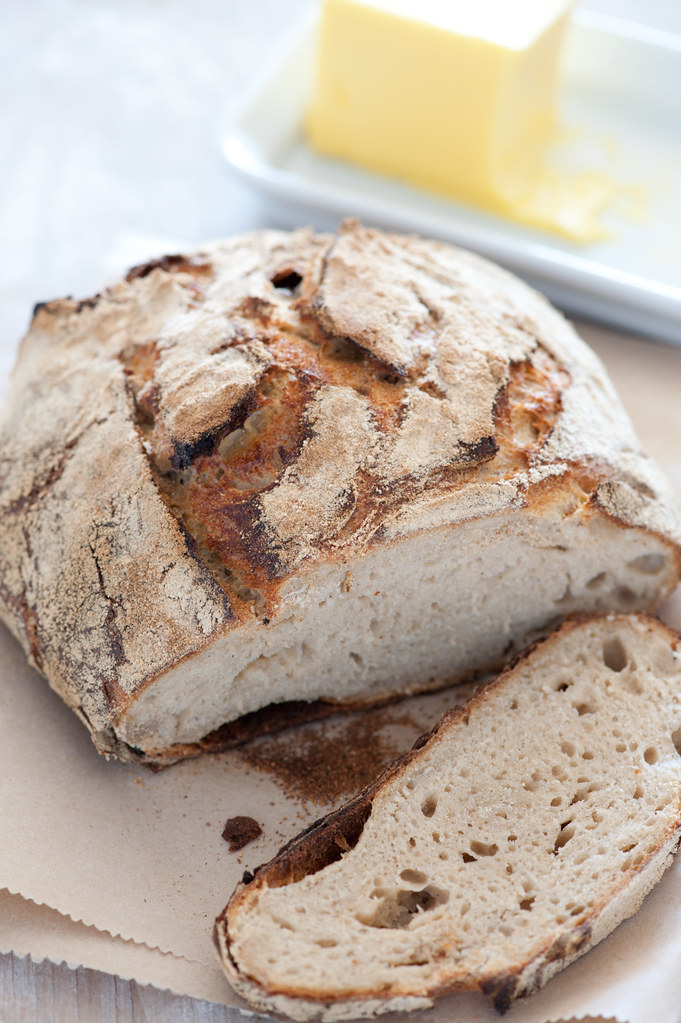
A starter is used to build the dough’s foundation before preparing the dough for a loaf of sourdough bread.
The sourdough starter is typically a fermented mixture of water and wheat, and it can produce multiple loaves of bread.
Another benefit of this bread is that you can keep the sourdough starter for an extended period.
Because a sourdough starter has such a long life, bakers can create loaf after loaf of sourdough bread without fear of running out of the starter.
Sourdough bread features a thick crust and a soft, chewy middle sprinkled with substantial air bubbles.
Its peculiar flavor is almost addictive. Sourdough bread is also a healthy and delicious bread alternative for any sandwich.
12. Potato Bread
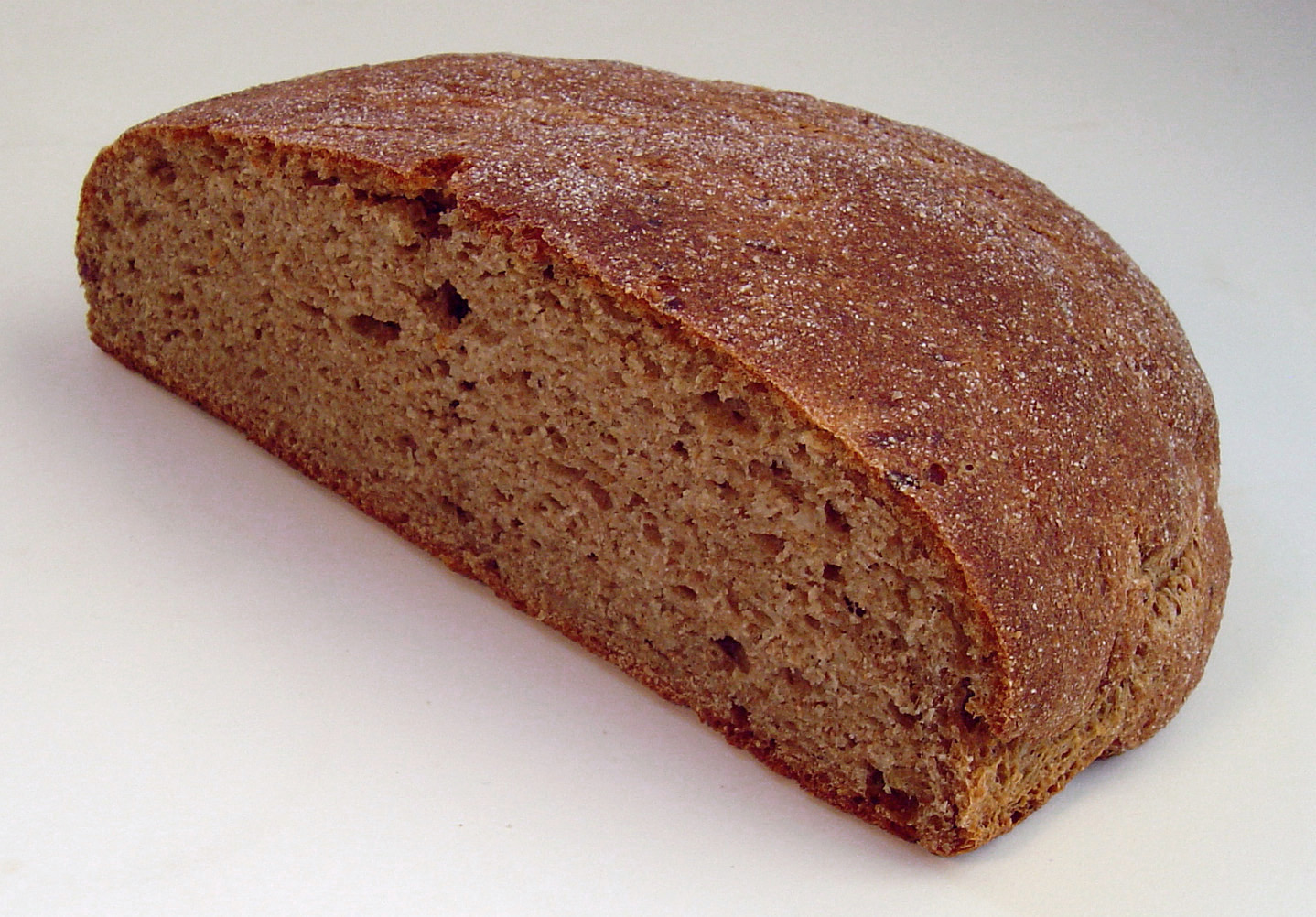
Potato bread, which is most usually encountered in the shape of dinner rolls, receives its ultra-recognizable texture (and flavor) from potato starch, potato flour, or even mashed potatoes, resulting in a soft, springy, and slightly sweet texture.
So, if you’ve just produced many mashed potatoes and aren’t sure what to do with them, don’t worry: turn them into a delicious potato bread you can make at home.
13. Soda Bread
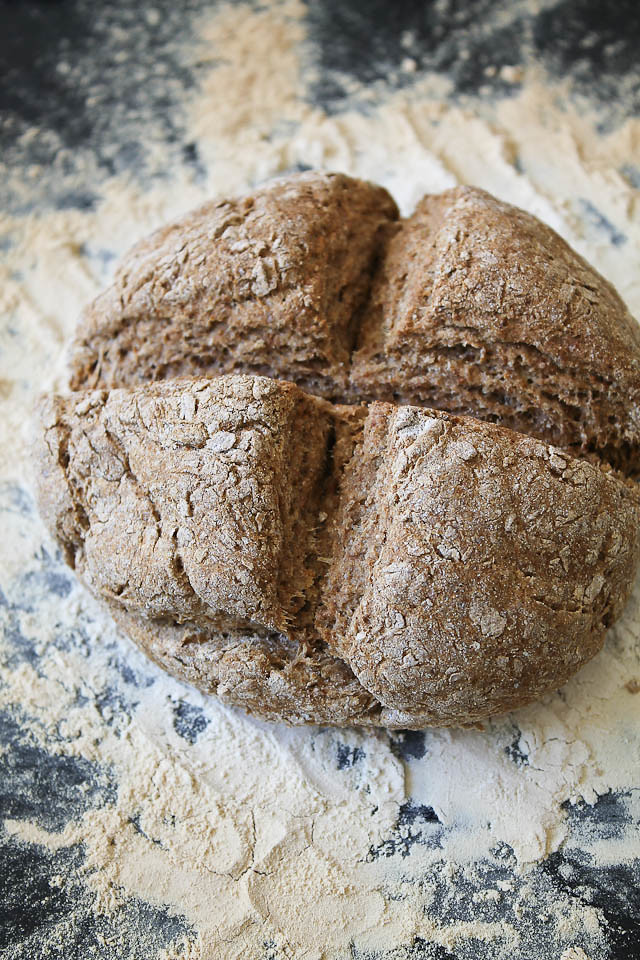
Alas, this isn’t a bread made with Sprite or Coca-Cola. Instead, this traditional Irish staple is fast bread leavened using baking soda and buttermilk, requiring little to no rising time.
Soda bread has a little denser texture than regular sandwich bread, but has a wonderfully aerated crumb that makes for a wet and crumbly bite. Yum
14. Whole Wheat Bread

Only sections of the wheat grain are used to make white bread.
However, the germ and bran remain intact in whole wheat bread.
What does this imply for the people who eat this bread? This indicates that whole wheat bread is more nutrient-dense and fiber-dense than white bread.
Also, you can use whole wheat bread to make any sandwich typically made with white bread.
With some imagination, it’s simple to create one’s own whole-wheat bread recipes.
15. Spelt Bread
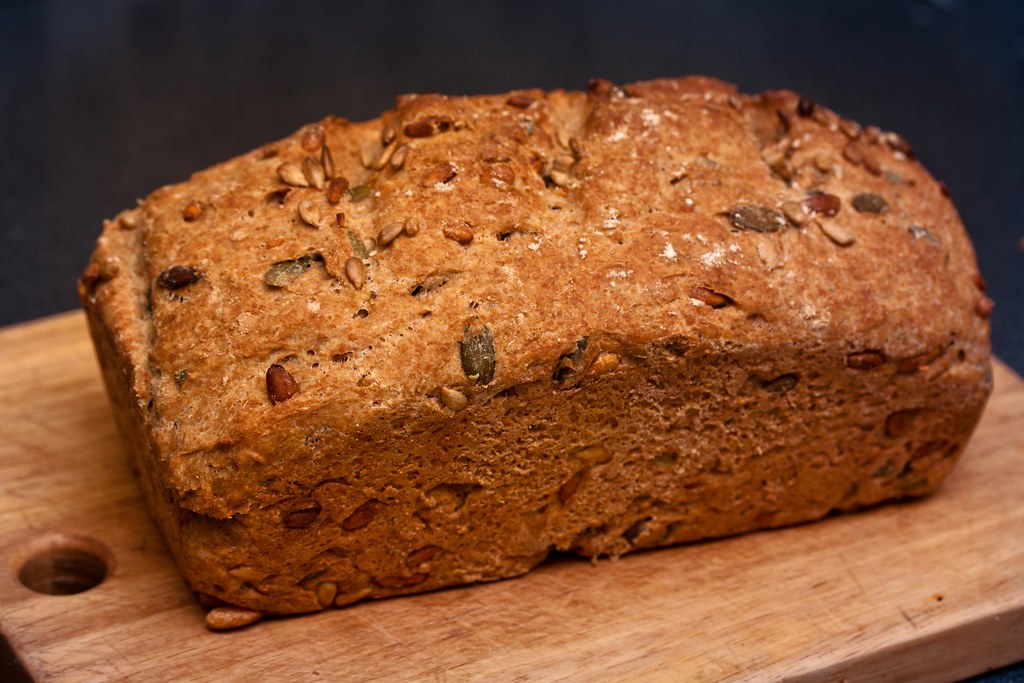
Spelt bread has a distinct nutty flavor and is usually entirely prepared with spelt flour (a distant cousin of wheat).
Technically, you can create practically any bread on this list with spelt flour (yes, spelt focaccia exists, and it’s delicious)— replace any wheat flour with spelt, and voila!
It’s ideal for those who want to reduce their milled or blanched wheat intake, but it’s crucial to note that it’s not a wheat substitute for celiac disease or wheat allergies.
16. Cornbread
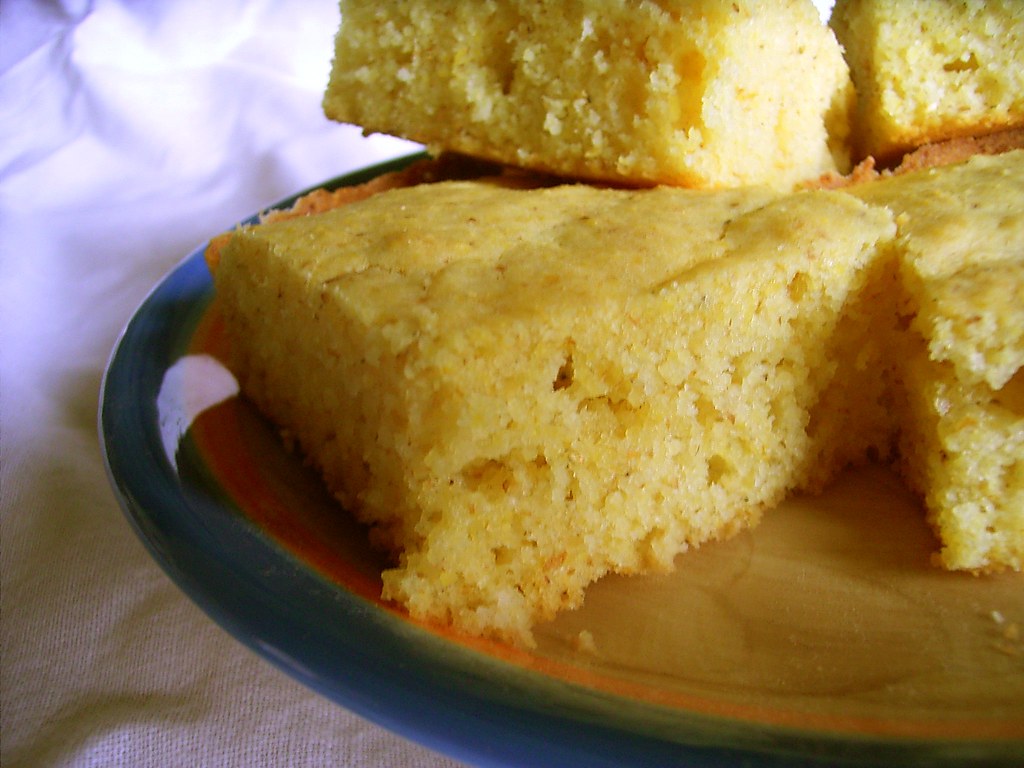
Cornbread, often associated with Southern BBQs, is a sweet, hearty bread that pairs well with a rack of oven-baked ribs (or two—we won’t tell).
It’s a cornmeal-based quick bread (batter bread) with a distinctive, chewy crumb.
Corn kernels may also be present, but this is mainly a personal preference.
17. Arepa
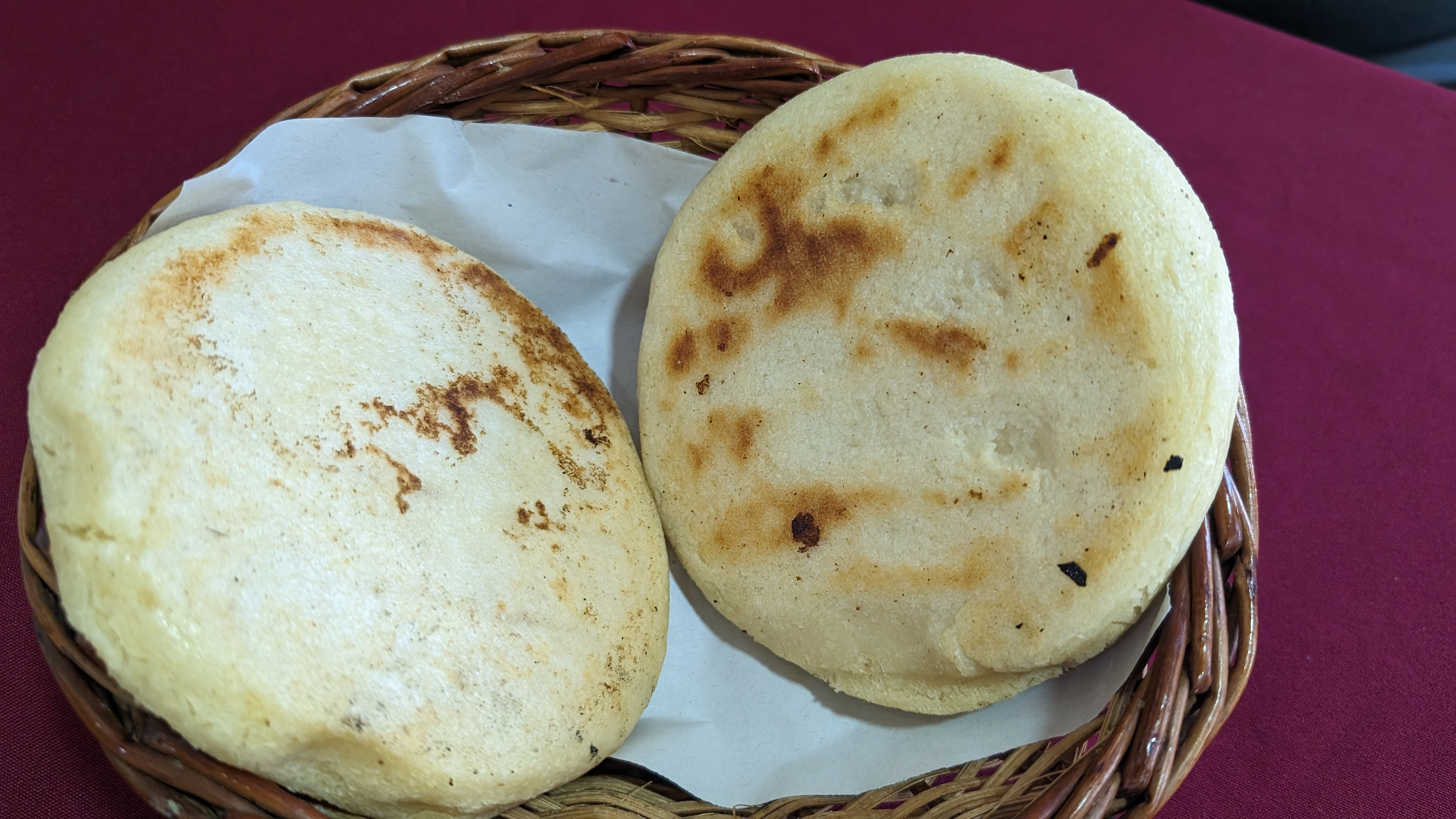
Arepa bread is made from cornmeal and is popular in Colombia and Venezuela.
It is flat and spherical and can be baked, grilled, or fried. When creating this bread, bakers can add various ingredients, such as ground beef and black beans.
Also, Arepas are inherently gluten-free because they are manufactured without wheat, making them a good choice for anyone with celiac disease or gluten sensitivity.
18. Bagels
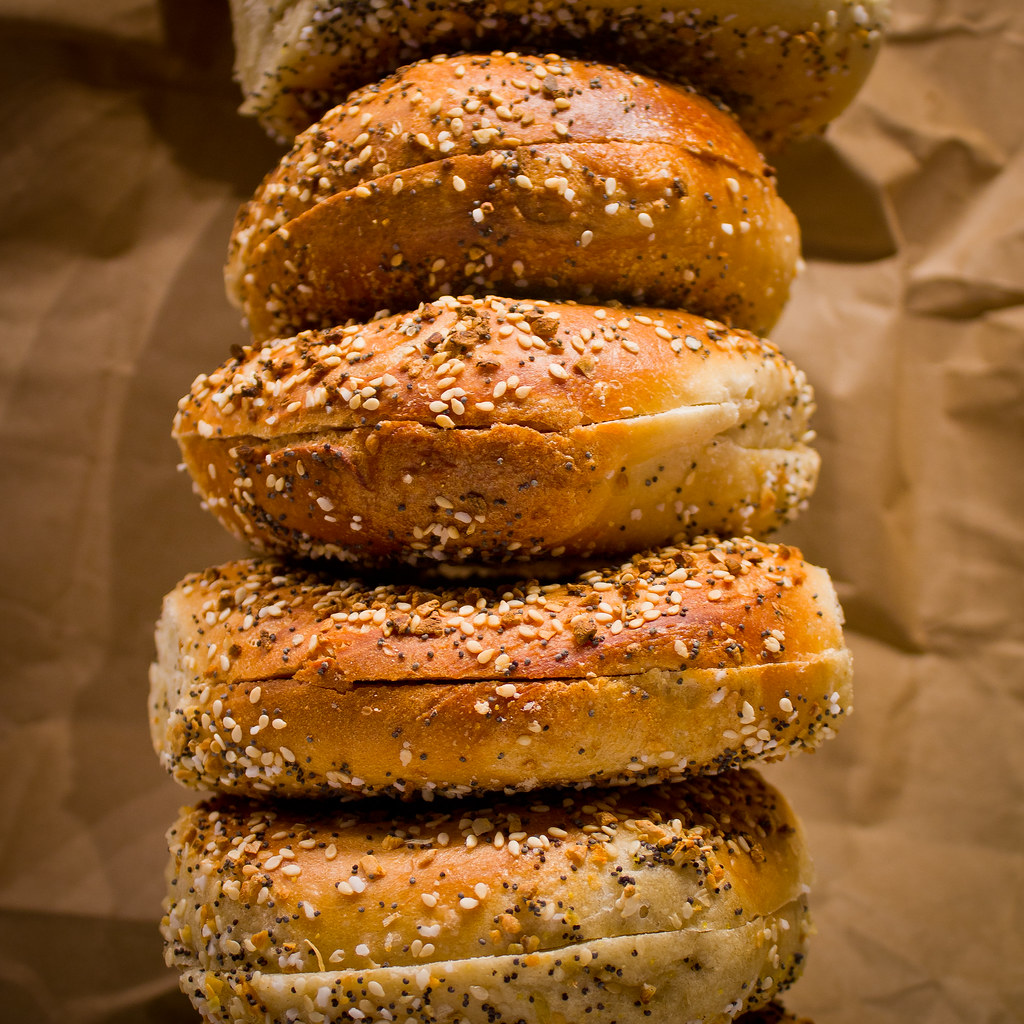
Bagels are typically created by boiling the dough in water briefly before baking it.
They’re circular and come in two pieces, one with a hole in the middle.
The best thing about bagels is how many different sorts and flavors.
Egg, cinnamon, and blueberry are just a few of the tastes available.
You’ll fall in love with a bagel when you eat it traditionally, with salmon, cream cheese, or both.
19. Chapati
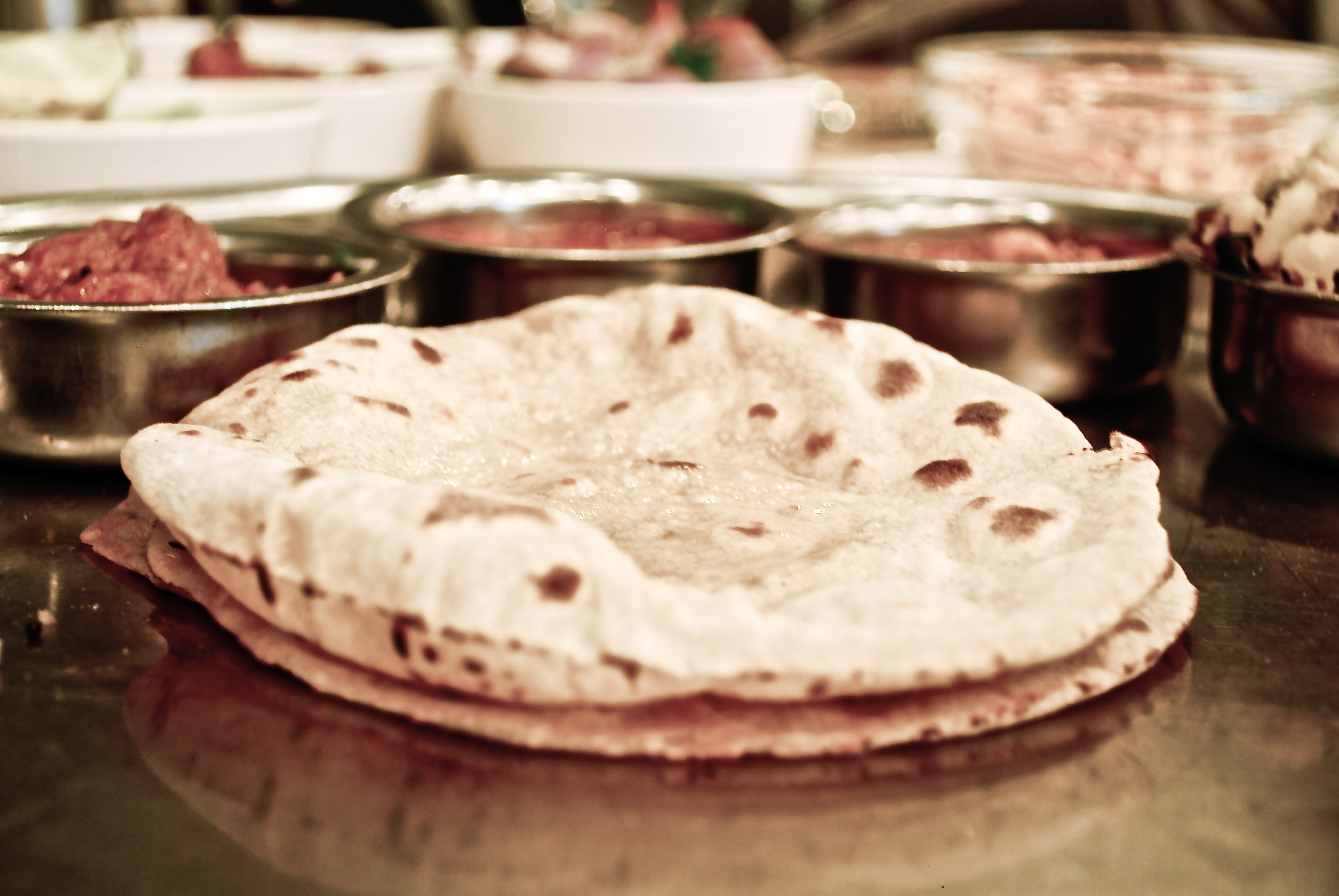
Chapati bread is a popular Indian flatbread that is frequently cooked until it has a freckled appearance.
This style of bread goes well with veggies or lentils and can also be used to make a sandwich.
Chapati bread is one of the different types of bread. It is often made from whole wheat flour and cooked without oil.
Snackers can even add a dab of butter to enhance the flavor.
20. Damper Bread
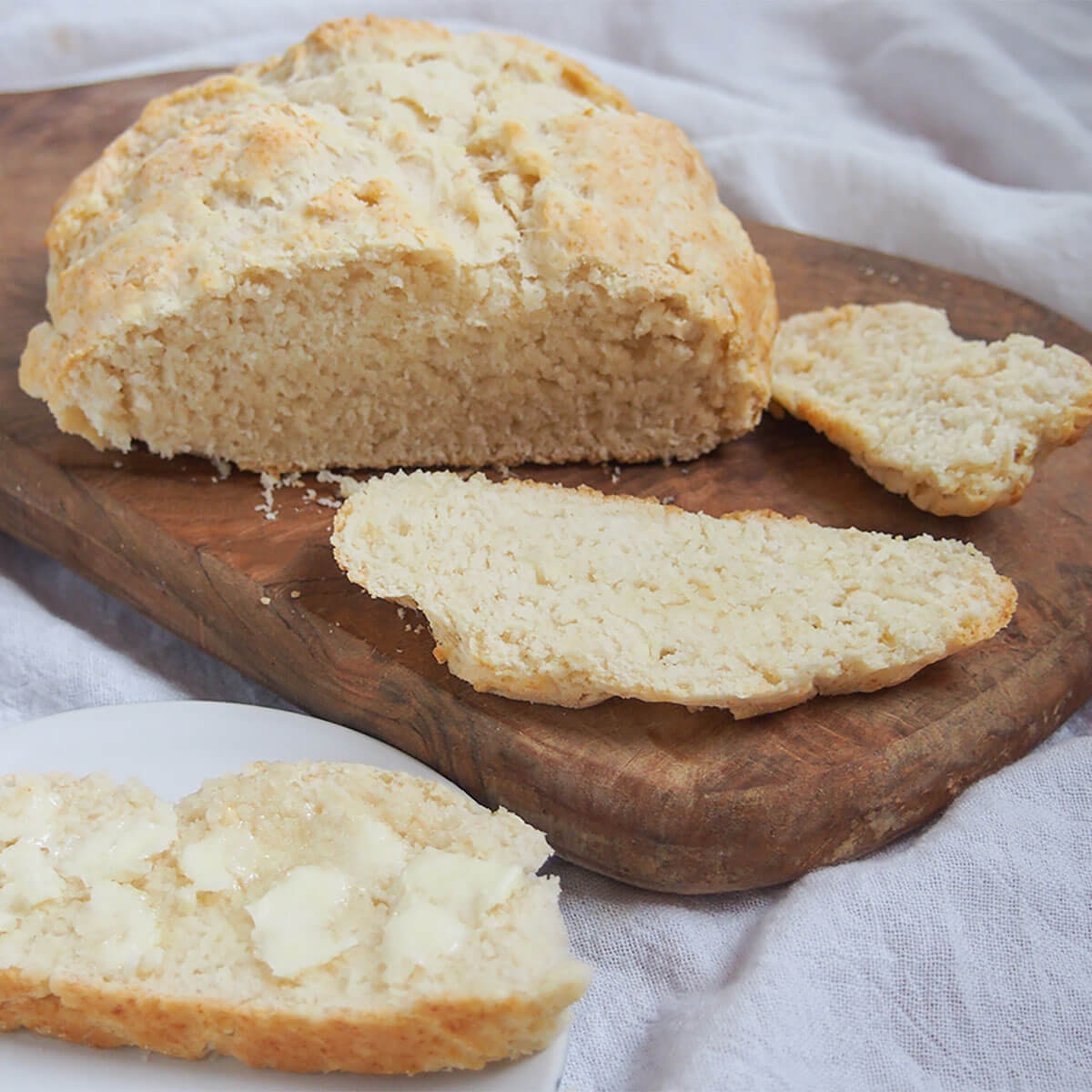
Damper bread, which originated in Australia, is made of flour, water, salt, and occasionally milk.
It is typically served with stew or meat. You once cooked damper bread over an open campfire.
This sort of bread is both delicious and adaptable. If desired, add baking soda to the dough as a leavening agent.
21. English Muffins
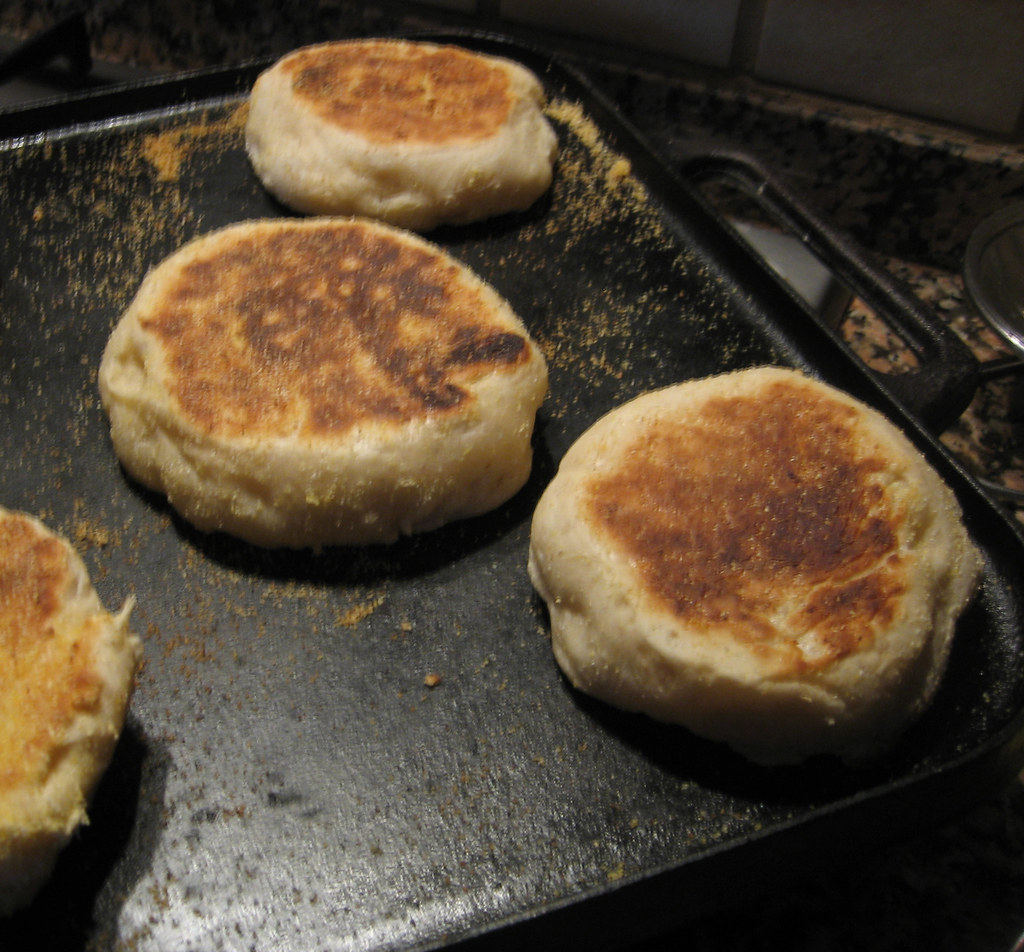
Little, round flatbread is produced from white or whole wheat flour. English muffins can be served with poached eggs, bacon, or Hollandaise sauce.
English muffins are usually healthier than other options, such as muffins or bread.
However, this bread is the American version of the English muffin that differs from the original, so researching before baking these breakfast delicacies may be necessary.
22. Grissini

Grisini is a crisp, dry bread served on tiny pencil-like sticks, similar to breadsticks.
This variety of bread originated in Italy and can be flavored in whatever way the baker desires. So, add any herbs or spices to enhance the flavor.
Also, grissini bread is typically served as a pre-dinner alternative to ordinary or garlic bread, although you can also eat it.
23. Injera
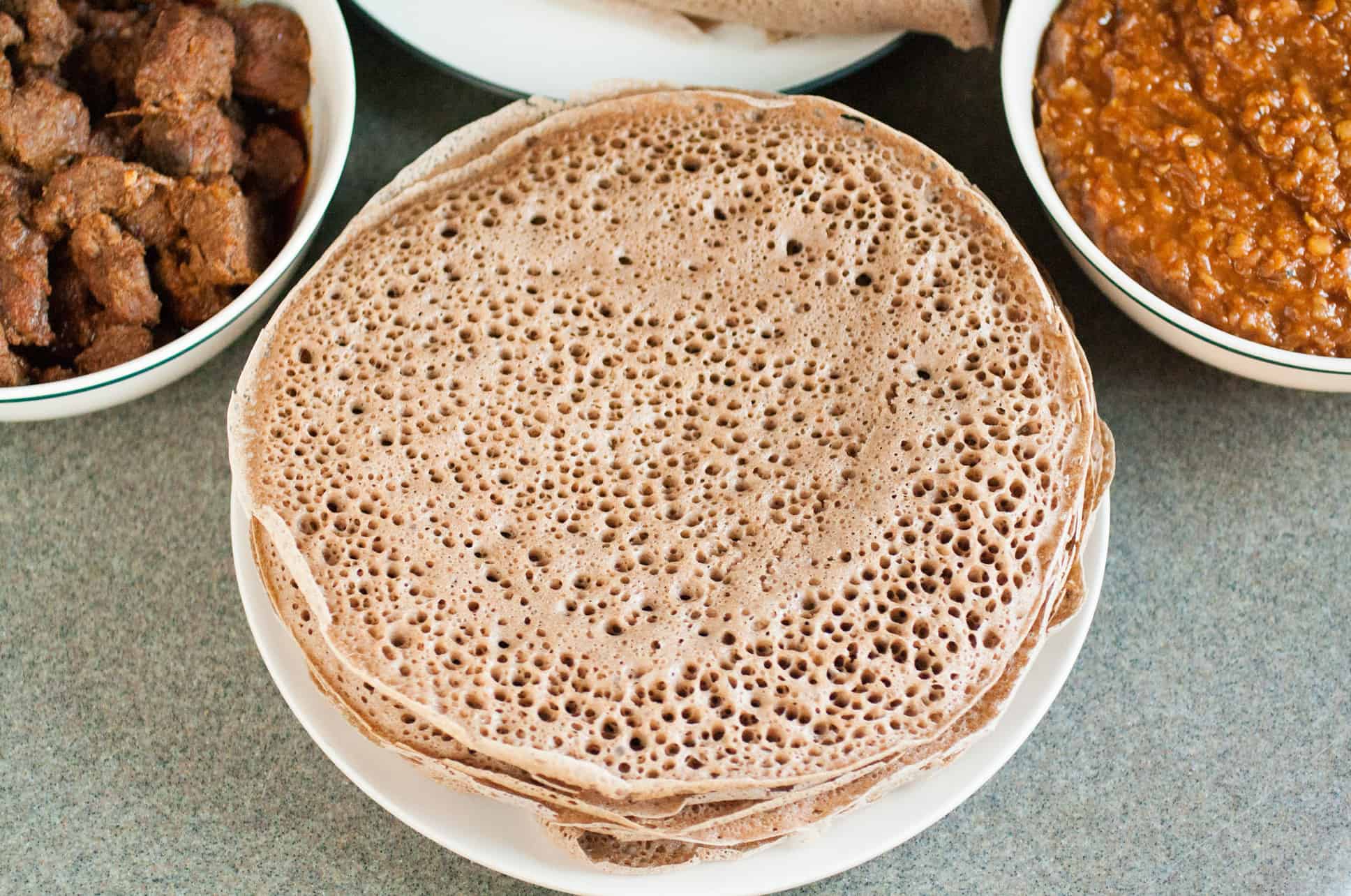
This is a piece of sourdough bread with a spongy texture and a slightly sour flavor.
Teff, a small grain native to Ethiopia, is commonly used to make injera bread.
Injera bread is also used to scoop up the meats and stews traditionally served on top of it and is a staple of Ethiopian cuisine.
24. Knäckebröd

This bread, which is primarily comprised of rye flour, has a cracker-like appearance rather than the typical bread appearance.
Knäckebröd is high in fiber and can be served with cheese or any other dish.
This bread is dry and complex, rectangular-shaped, like many crackers. You can make it with a variety of grains.
Also, Knäckebröd is a delicious and healthful dish that can incorporate a variety of herbs and spices.
25. Lavash
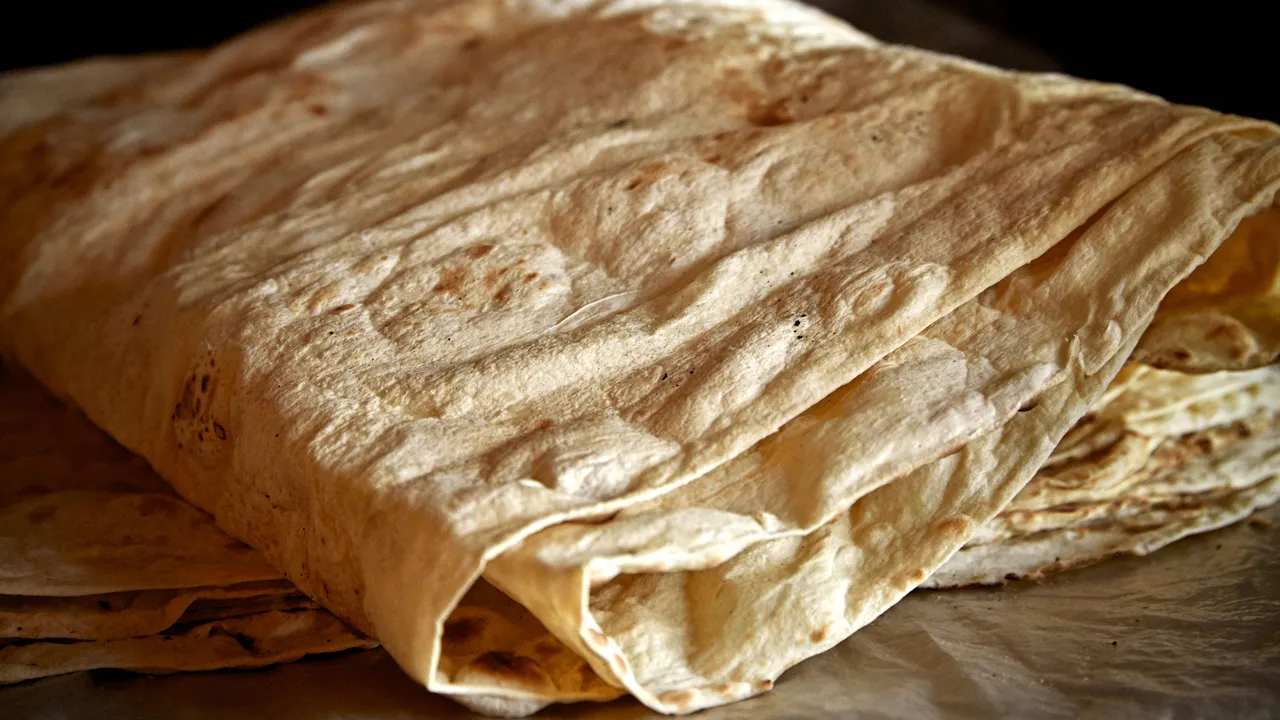
Lavash bread is a thin flatbread made with flour, salt, and water and is popular in Turkey and Iran.
This bread is often baked in an oven and is low in fat. The softest lavash bread is fresh out of the oven.
For a bit more taste, bakers might add poppy or sesame seeds.
26. Matzo
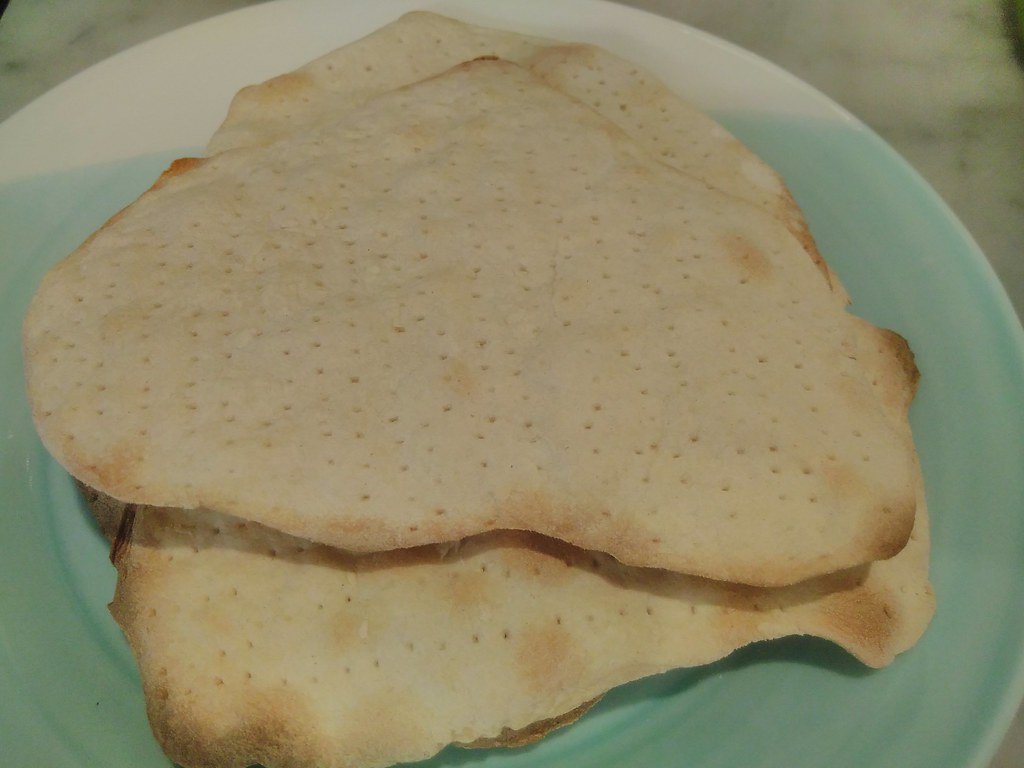
Matzo bread is an unleavened bread that resembles giant crackers.
It is made of the five grains mentioned in the Hebrew Bible: wheat, barley, rye, oats, and spelt.
Matzo bread is used in many traditional Jewish meals and on particular Jewish holidays.
Matzo bread is available in two varieties: soft and firm. It is delicious and essential to Jewish traditions and faith.
27. Naan
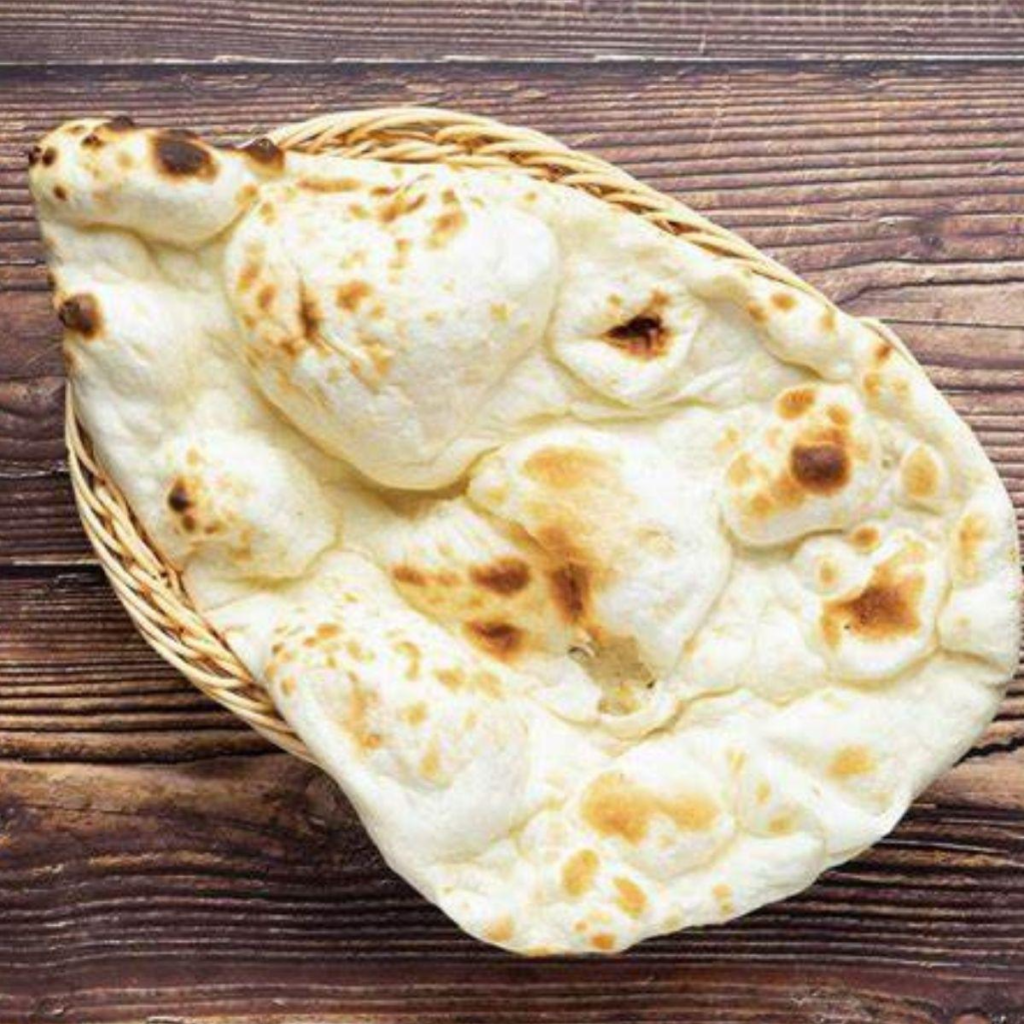
Naan is a flatbread made in the oven with yogurt as one of the primary ingredients.
It’s usually coated with butter before baking, and toppings like dried fruit, chopped meat, and even garlic are sometimes added. Naan bread is famous throughout Asia.
Also, Naan fans will find this bread kind in many stores today and at farmers’ markets.
28. Paratha

Paratha bread is a layered Indian flatbread made from whole wheat flour.
It is commonly fried or baked in oil. For a healthier alternative, bake it instead.
You can use vegetables, potatoes, onions, eggs, and various other ingredients to make and eat paratha bread. Malaysia and Singapore, for example, are big fans of it.
29. Qistibi
This style of bread is typically found in Russia and consists of a cooked flatbread with a filling.
The filling is usually mashed potatoes, millet, or various sorts of meat.
The filling can be placed inside or on one side of the bread dough, with the other covering it to keep the contents inside.
30. Roti
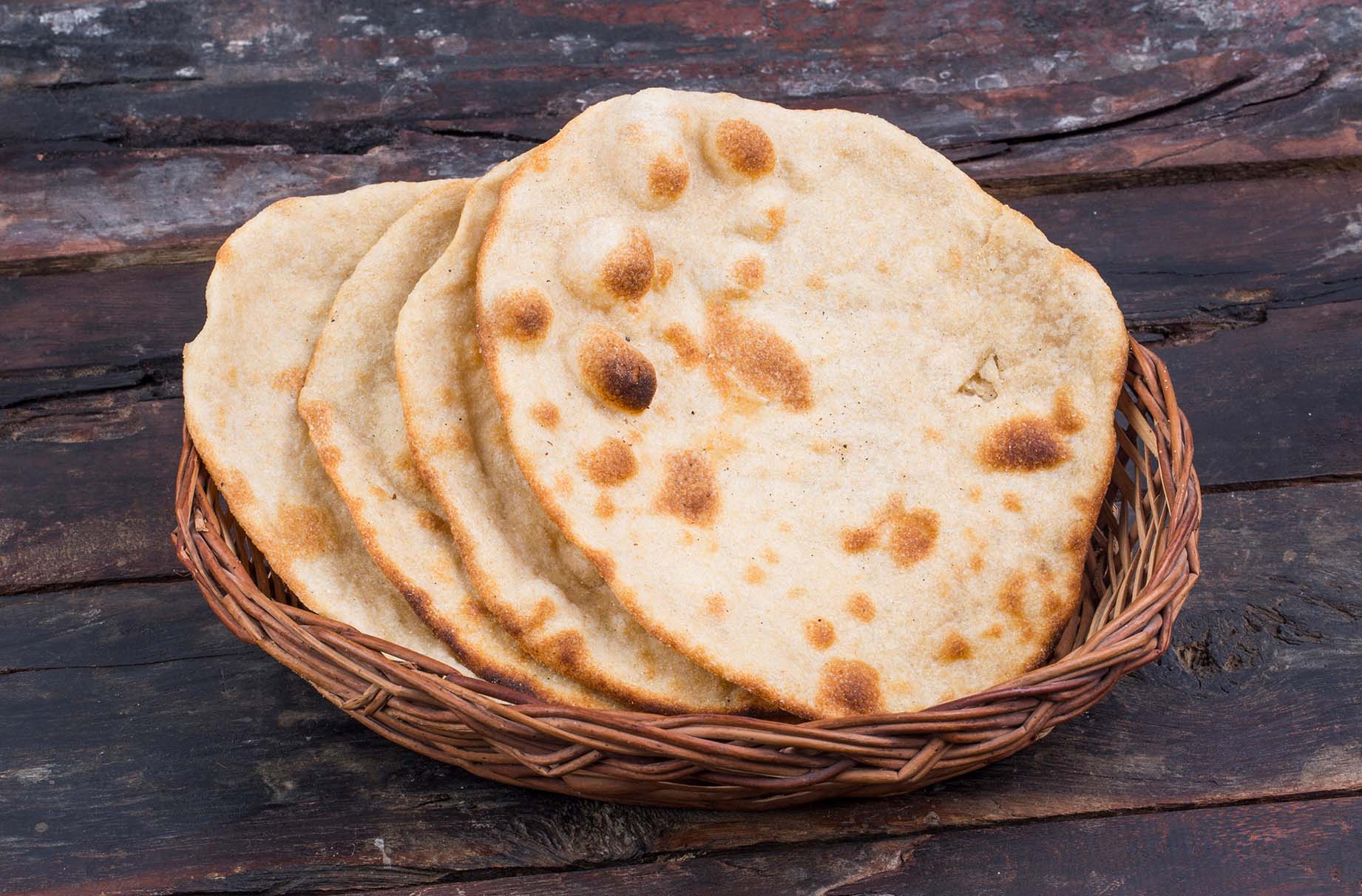
Roti bread is similar to chapati bread, an unleavened flatbread. It is immensely popular in the Caribbean and India.
Roti is one of the different types of bread. It is typically cooked with whole wheat flour and water, and the loaves are butter-coated before baking to add taste.
In many cultures, roti bread is offered with spices as a nutritious snack.
31. Vánočka
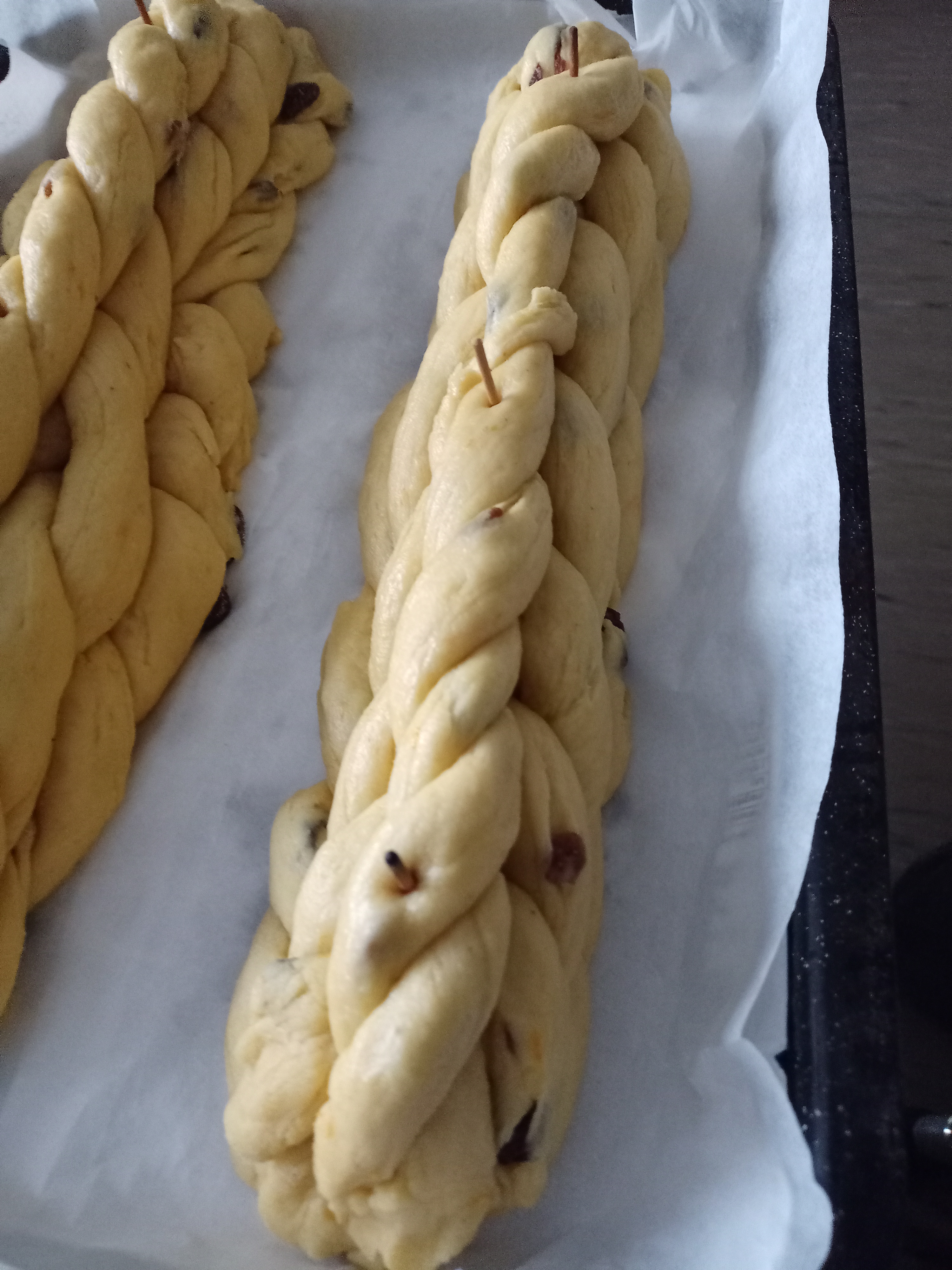
This is a sweet bread with sugar, almonds, raisins, or other dried fruits sprinkled on top.
The recipe for Vánočka is a little complicated, but there are a few alternative ways to make it.
Vanocka bread is a celebratory European bread that’s so rich and sweet that it’s better saved for special occasions.
Furthermore, Vánočka bread is traditionally served around Christmas in some countries, such as the Czech Republic and Slovakia.
There are also several intriguing customs associated with this sort of bread.
One practice, for example, entails leaping up and down while the dough rises — as if breadmaking wasn’t tricky enough.
32. Yufka
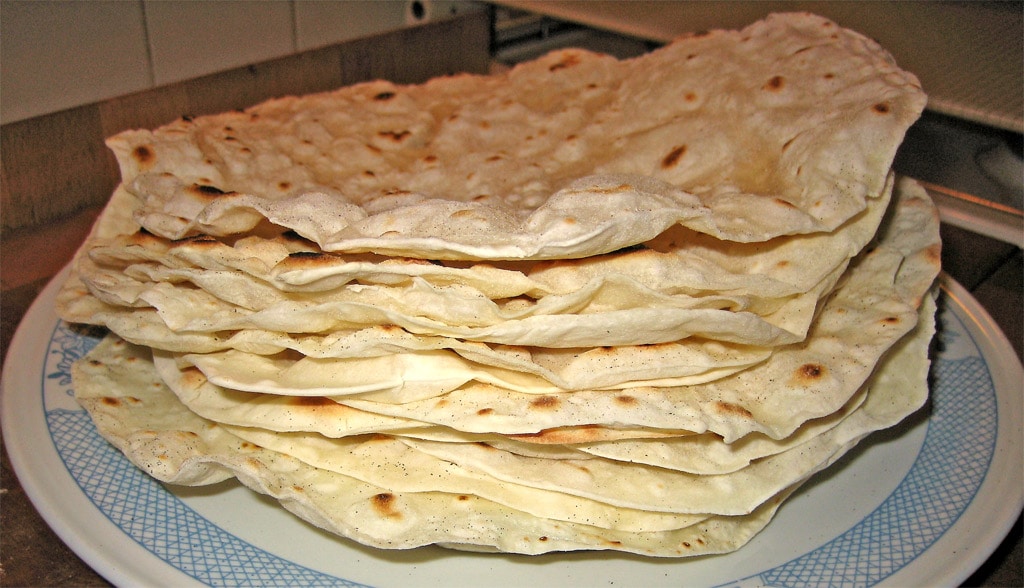
This circular, unleavened bread with a paper-thin crust originated in Turkey.
Similar to lavash bread, Yufka is typically made using wheat flour, salt, and water, while some recipes include a small amount of vegetable oil in the dough.
You can use this bread in pastries with sweet ingredients like almonds or dried fruits, or savory ingredients like meats, cheeses, and veggies.
33. Zopf

Zopf bread is an unusual form of bread in that when it’s done baking, it resembles a big braid.
It’s typically served with butter and jelly for breakfast, and it tastes rich and buttery.
Zopf bread is most commonly found in Germany, Switzerland, and Austria.
It is primarily prepared with white flour, yeast, milk, butter, and eggs.
34. Challah
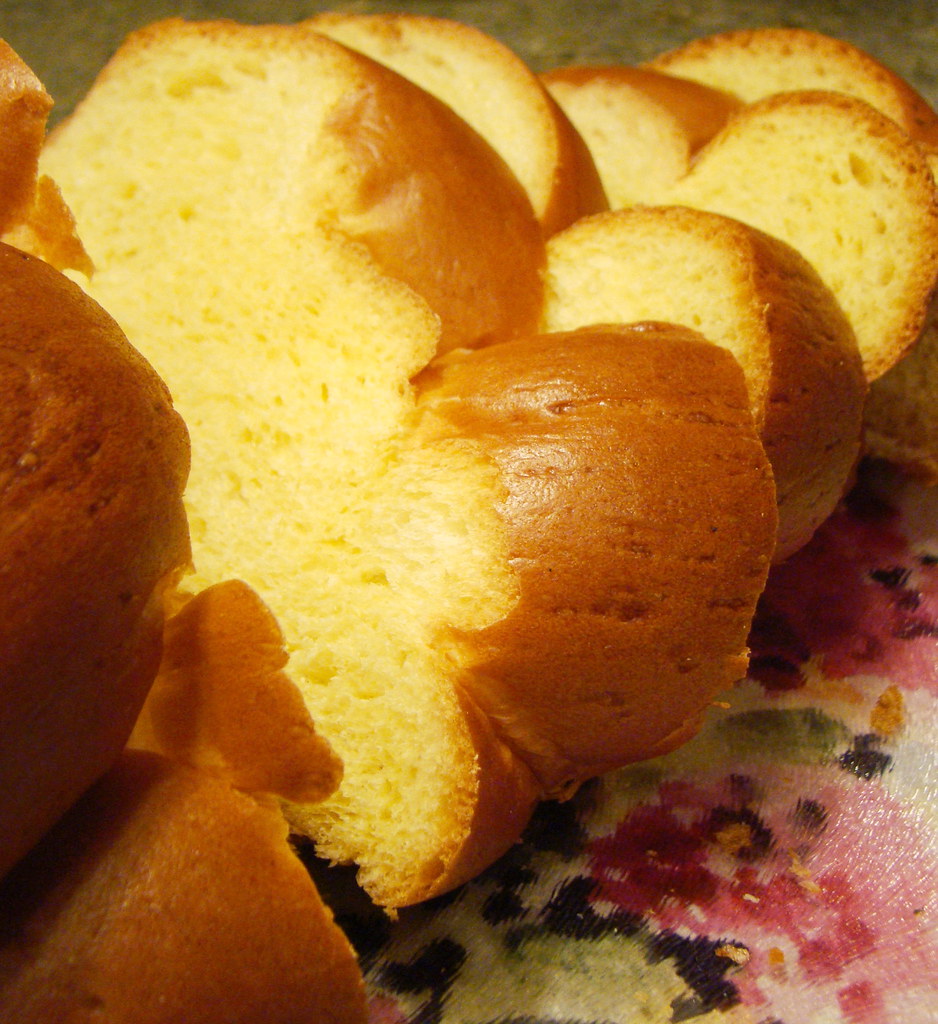
Challah stands out as a traditional Jewish bread with its rich, slightly sweet flavor and distinctive braided look.
The golden crust and soft interior make it instantly recognizable and pretty irresistible.
Bakers usually prepare Challah for Sabbath and other Jewish holidays.
They braid the dough into intricate patterns before baking.
A standard loaf often features six braids, which symbolize the six days of the week, not counting the Sabbath.
Modern twists include chocolate chip, raisin, or even apple-infused versions.
Many families guard their own Challah recipes, passing them down through generations.
The bread’s sturdy texture and subtle sweetness make it ideal for French toast.
Try using day-old Challah for the best French toast—it just soaks up everything perfectly.
35. Pumpernickel
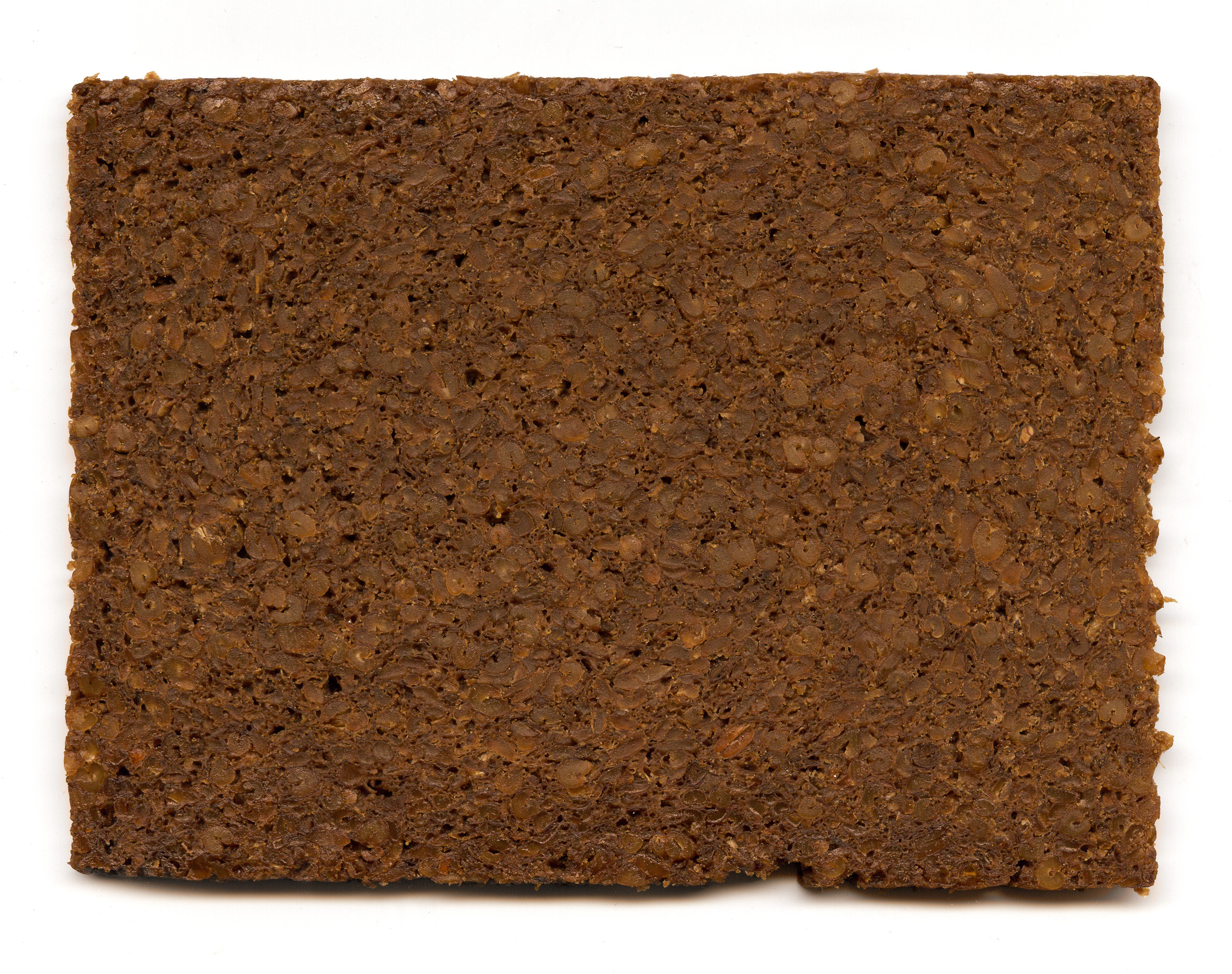
Pumpernickel comes from Germany, and you can spot it by its dark brown color and dense, moist crumb.
It gets that deep shade from a long, slow bake at low temperatures, not from artificial coloring.
This bread relies on coarsely ground rye and a sourdough starter instead of commercial yeast.
Some authentic recipes even use old bread crumbs in the dough, which creates a unique fermentation process.
The name “pumpernickel” has colorful roots. Some say it comes from French, others from German words describing its digestive effects.
Health enthusiasts love pumpernickel for its high fiber and low glycemic index. It’s a solid pick for anyone watching their blood sugar.
36. Pretzel Bread
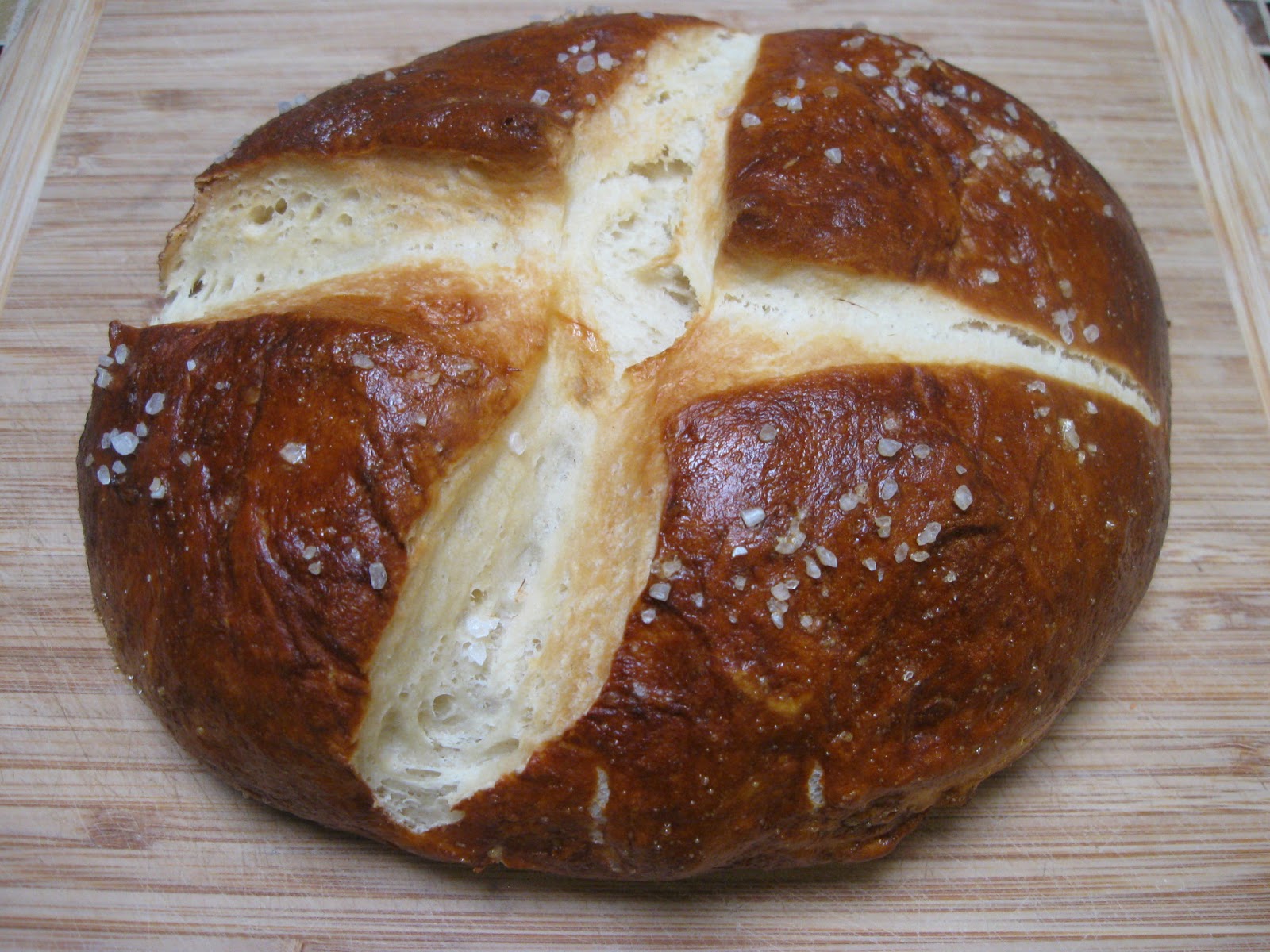
Pretzel bread brings together the flavor of classic pretzels and the convenience of everyday bread.
Bakers dip the dough in a lye or baking soda solution before baking, which gives it that signature dark, shiny crust.
This German-inspired bread has a chewy interior and a slightly tangy taste.
The light, airy crumb plays off the crust in a way that’s just plain satisfying.
Bakeries shape pretzel bread into rolls, buns, and loaves, making it a go-to for sandwiches—especially with mustard and cold cuts.
At home, you can get close to bakery results with food-grade lye or a strong baking soda bath.
37. Tiger Bread (Dutch Crunch)
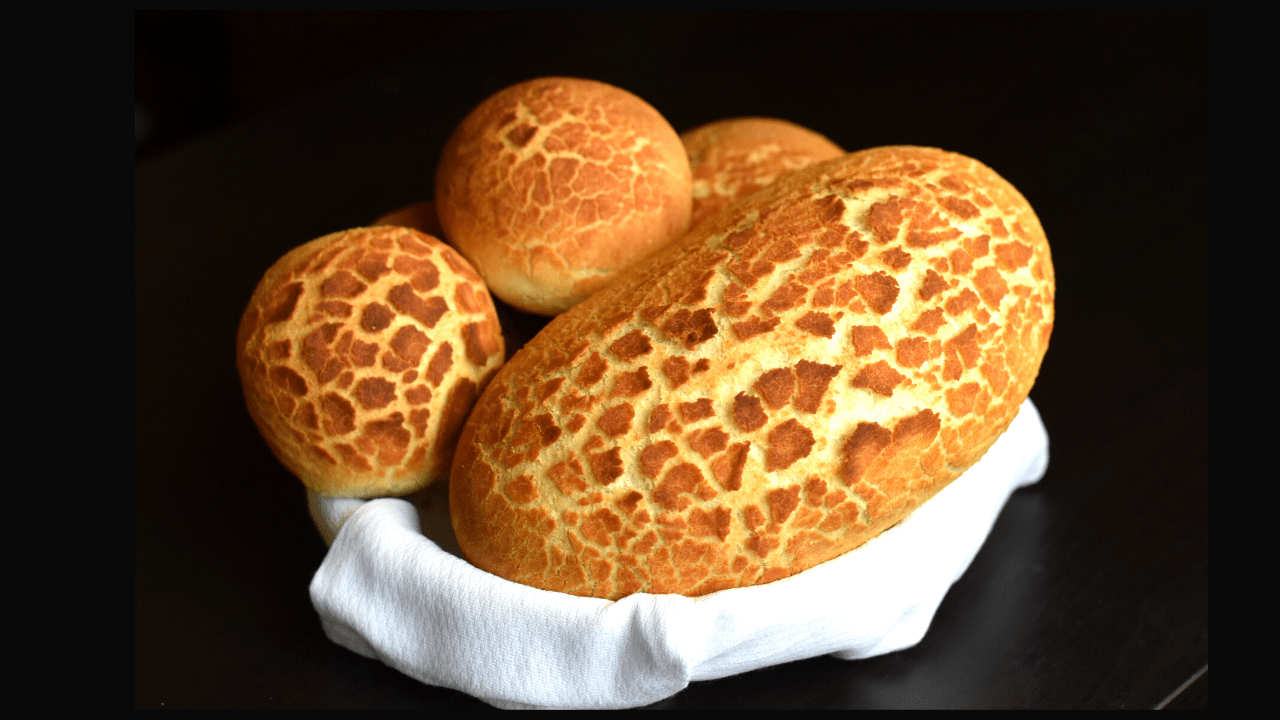
Tiger bread, or Dutch Crunch, stands out with its mottled, crackled crust that really does look like a tiger’s pattern.
Bakers brush the dough with rice flour paste before baking to create this effect.
The paste cracks as it bakes, adding a subtle sweetness and crunch that contrasts with the super soft inside. That mix of textures makes every bite pretty memorable.
Despite the Dutch name, this bread found a huge following in the San Francisco Bay Area, where it’s a sandwich favorite.
The interior stays soft for days, which is great for anyone who doesn’t go through bread in one sitting.
38. Panettone
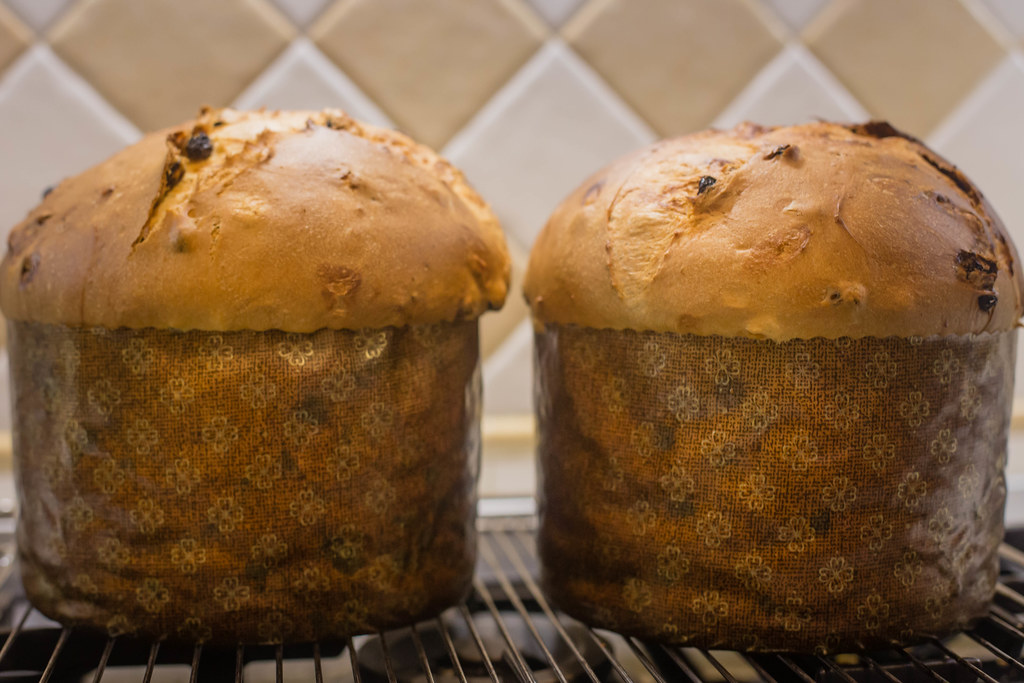
Panettone brings Italian holiday spirit to tables everywhere with its tall, cylindrical shape.
This sweet bread is packed with candied fruits, raisins, and citrus zest, giving it a festive flavor that just feels right for celebrations.
Bakers build up the flavor through multiple rises, sometimes letting the dough ferment for days.
That patience pays off with a light, airy texture, even though the loaf stands tall.
Italians traditionally serve panettone at Christmas and New Year, often with sweet wine or mascarpone cream.
You’ll find modern versions with chocolate, pistachio, or limoncello, too.
The bread hangs upside down to cool, which stops it from collapsing—a neat trick that shows off the skill behind it. Good panettone stays soft for weeks if you store it right.
39. Bannock
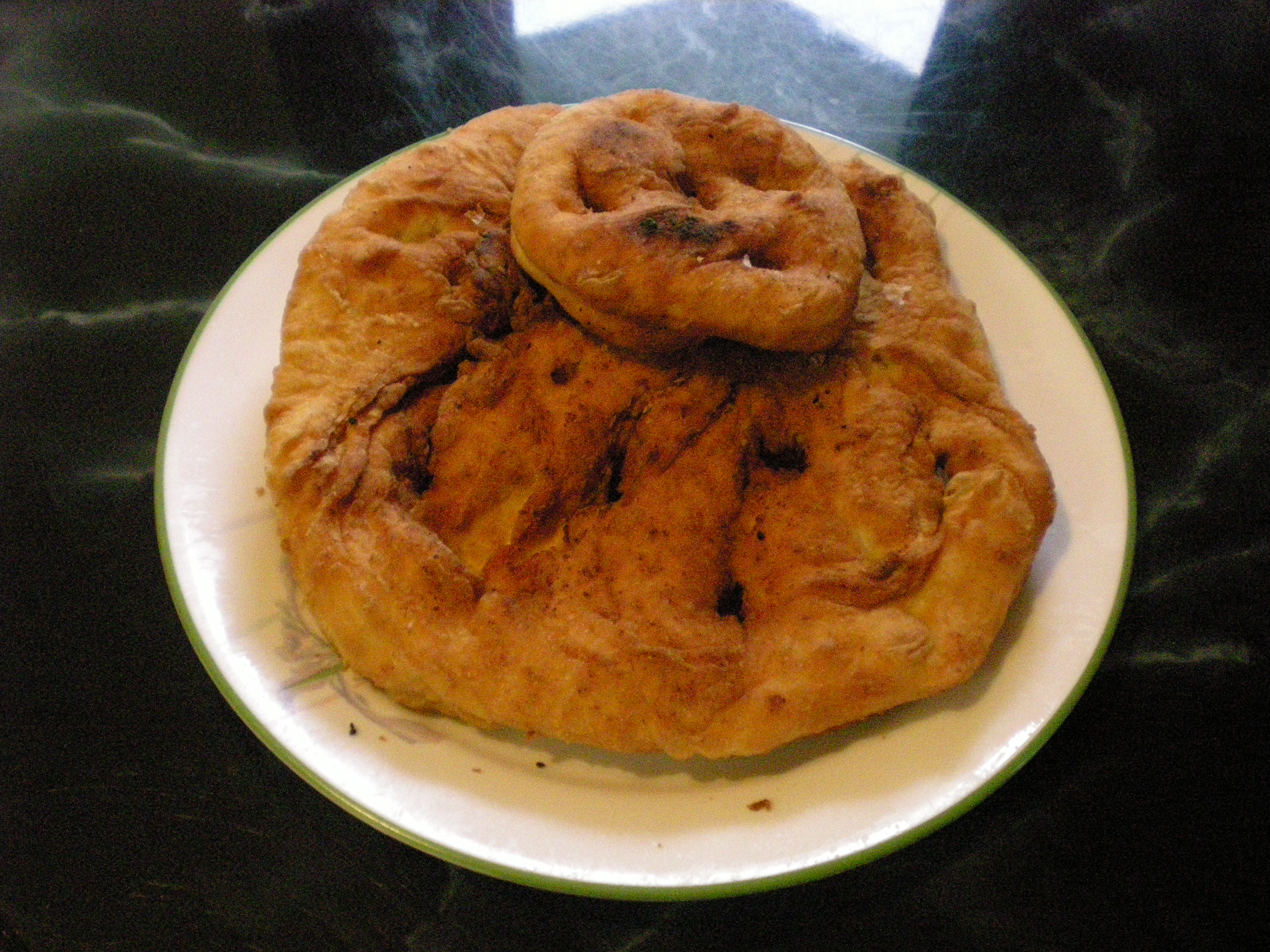
Bannock holds a special place in Indigenous North American food culture, showing how bread adapts to all sorts of cooking methods.
Traditionally, cooks make this simple flatbread over open flames or on hot rocks.
The basic recipe calls for flour, water, salt, and baking powder, so it’s easy to make with whatever’s on hand. Some modern versions use lard or butter for more richness.
First Nations, Inuit, and Métis communities each have their own takes on bannock, changing up the recipe to fit local tastes and ingredients.
Sometimes people add dried berries, nuts, or wild herbs. Bannock keeps evolving, but it’s still rooted in tradition.
You’ll see it at ceremonies and in contemporary Indigenous restaurants across Canada and the U.S.
40. Croissant
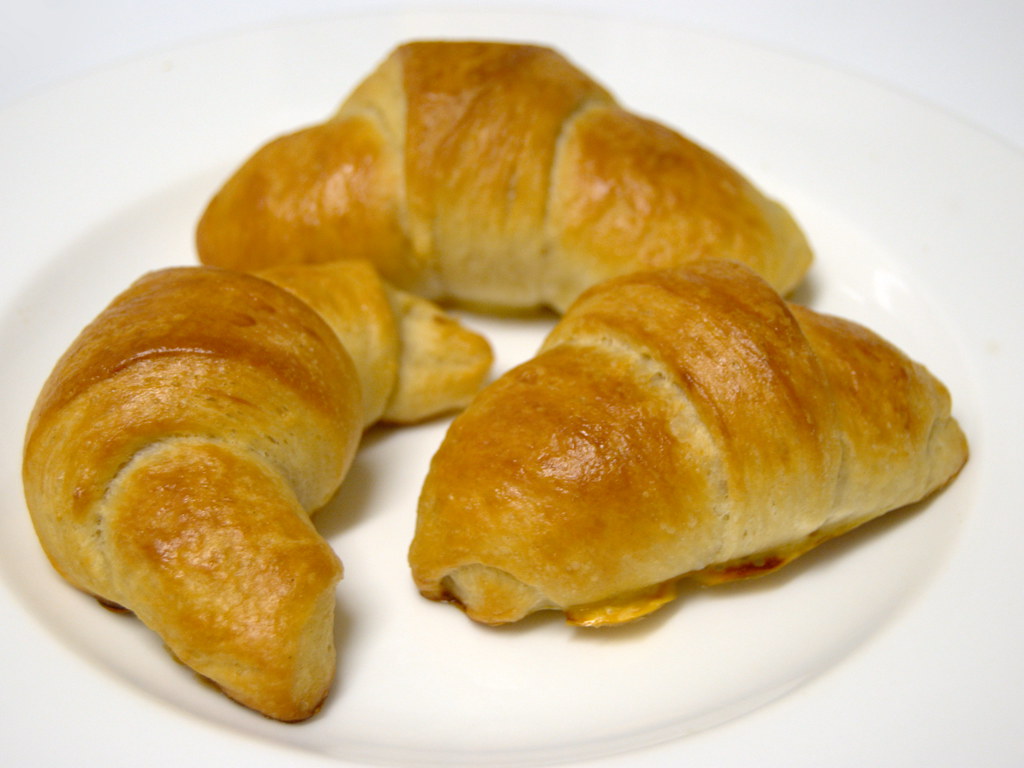
Croissants are the high point of laminated dough, with their crescent shape and flaky, buttery layers.
Bakers get that texture by folding butter into the dough again and again, building up hundreds of layers.
While everyone thinks of France, croissants actually started out in Austria as “kipferl” before French bakers made them their own.
Getting the lamination right takes real attention to temperature and folding.
Modern bakeries fill croissants with chocolate, almond paste, or even ham and cheese. The dough’s flexibility means bakers can get creative.
A well-made croissant should shatter into crispy flakes when you bite in.
Inside, you’ll see a honeycomb structure—proof of all that careful work.
And honestly, the smell of fresh butter when you break one open? That’s hard to beat.




